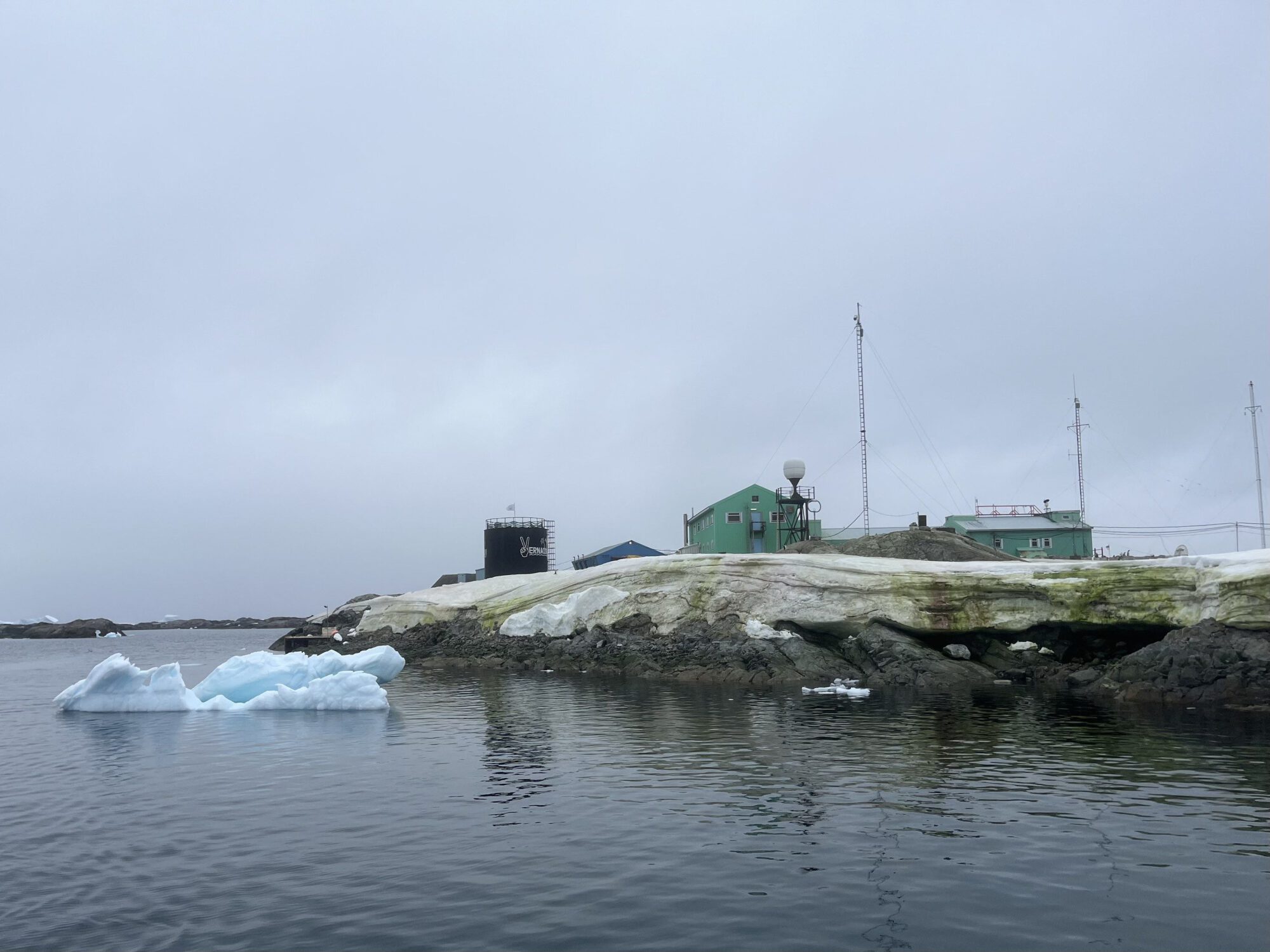Before you can see Vernadsky, the Ukrainian station, you can smell it. At least the day before yesterday afternoon, when we arrived, the wind carried the smell of the resident Gentoo penguin colony (gentoo penguins) towards us from afar. Soon after, not only did lots of penguins appear in the water and on land on and between the rocks, but also the station buildings.
Vernadsky Base
We took a break here for two days, hid from the storm from the SW, filled up on energy, water and diesel and visited the Ukrainians. The station is known for its hospitality towards small sailing yachts. The Selma and Piotr are welcome guests after many years, and Piotr has close friends here.

In a small bay close to the station, we lay quiet and sheltered. At the entrance, the resident leopard seal greeted us and drifted past us on its floe. For the first time during the trip, we not only dropped anchor but also deployed four shore lines. We spend almost two hours doing this. On land, we look for suitable anchor points in the form of rocks or large stones, lay slings, deploy floating lines with the dinghy, attach them to the anchor points and then gradually pull them tight from deck until everything fits and the Selma is securely moored. Just as we have finished, another yacht, the Mon Coeur, turns into the bay and moors up next to us. Gennadi, the Ukrainian skipper, is also a good friend of Piotr. He made the Mon Coeur seaworthy again years ago, refitted and extended it. He proudly tells us about it and later shows us every last corner of his boat. Everything is bigger and more comfortable than on the Selma. The engine room alone, where two Mr. Perkins are on duty, is as big as our entire saloon. The cabins each have their own bathroom, the kitchen is huge and it’s warm. Far too warm for our standards. We’re glad to be back on the Selma later, we’ve got used to the 10-15 degrees below deck and love it just the way it is.
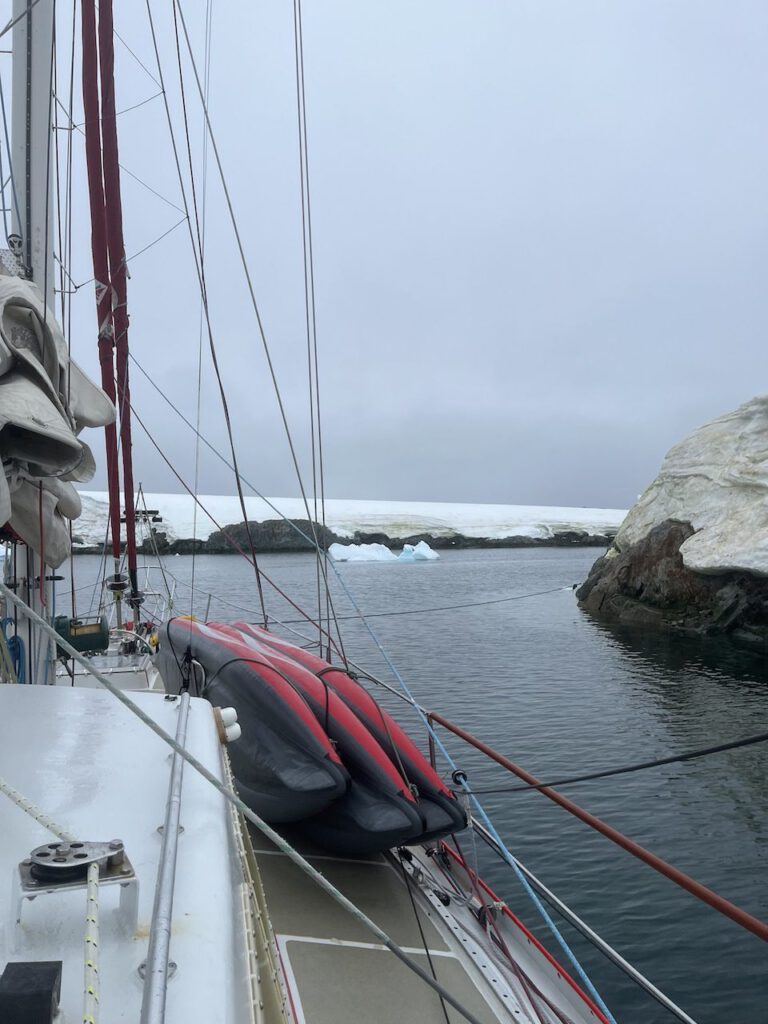

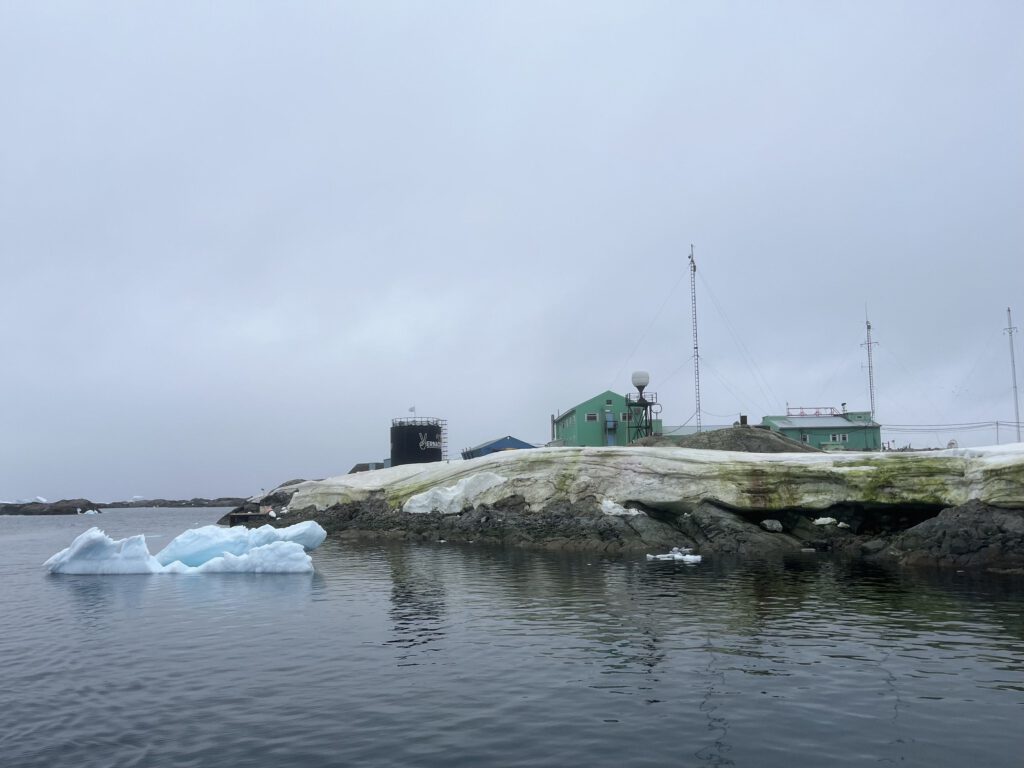
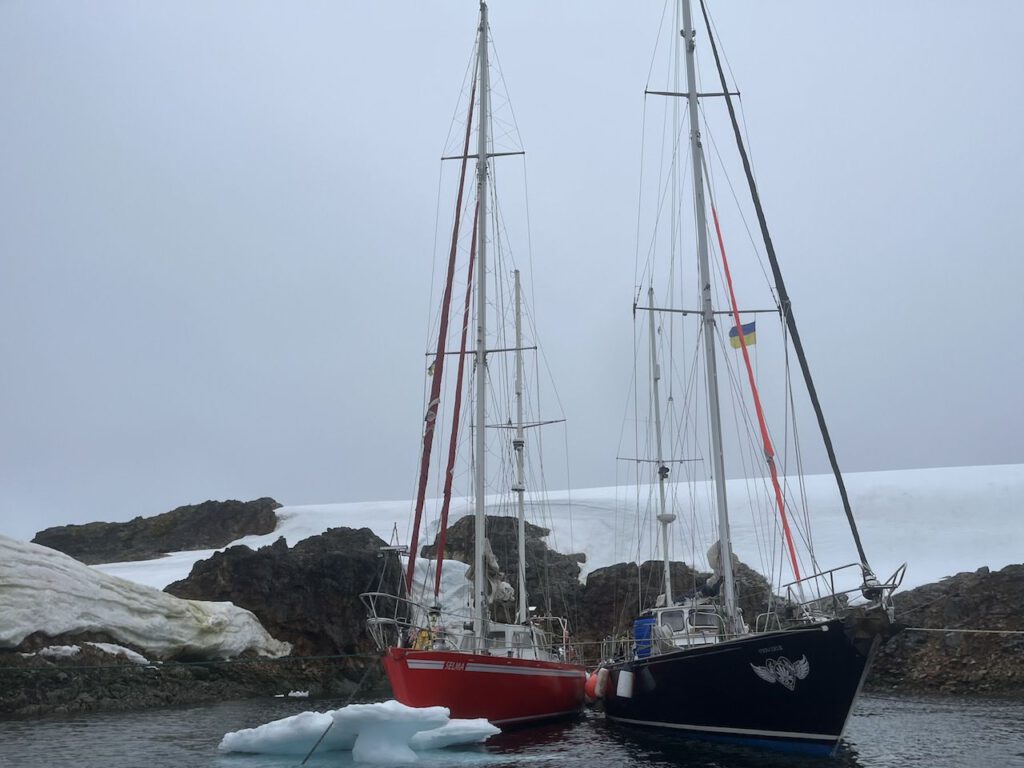
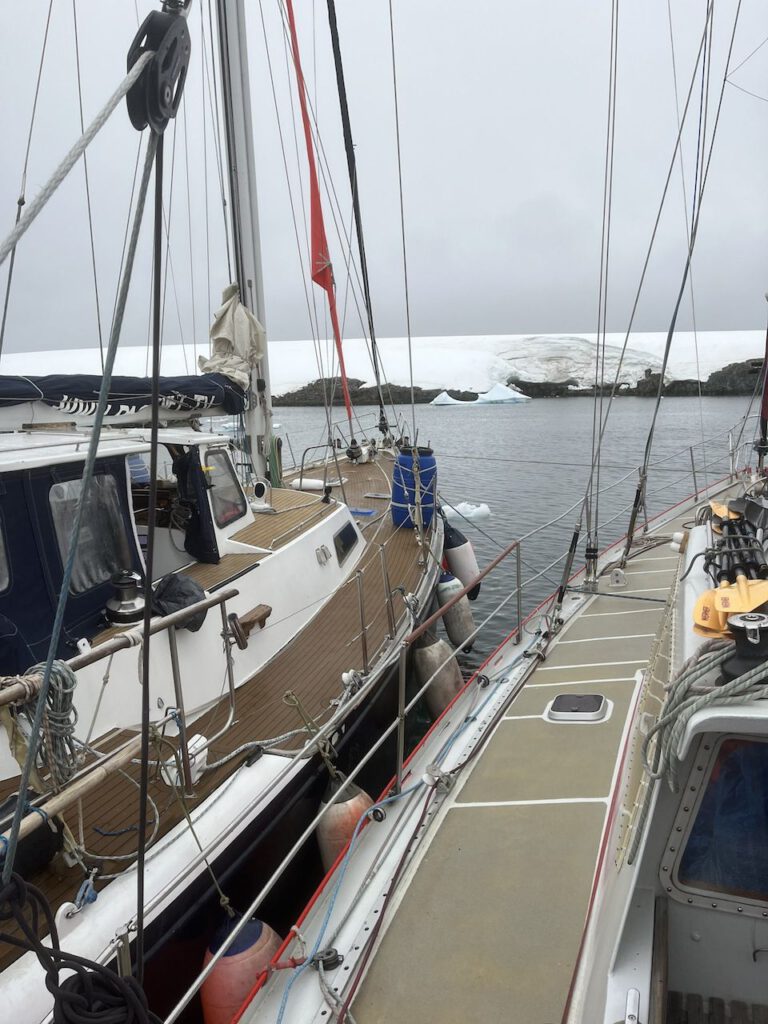
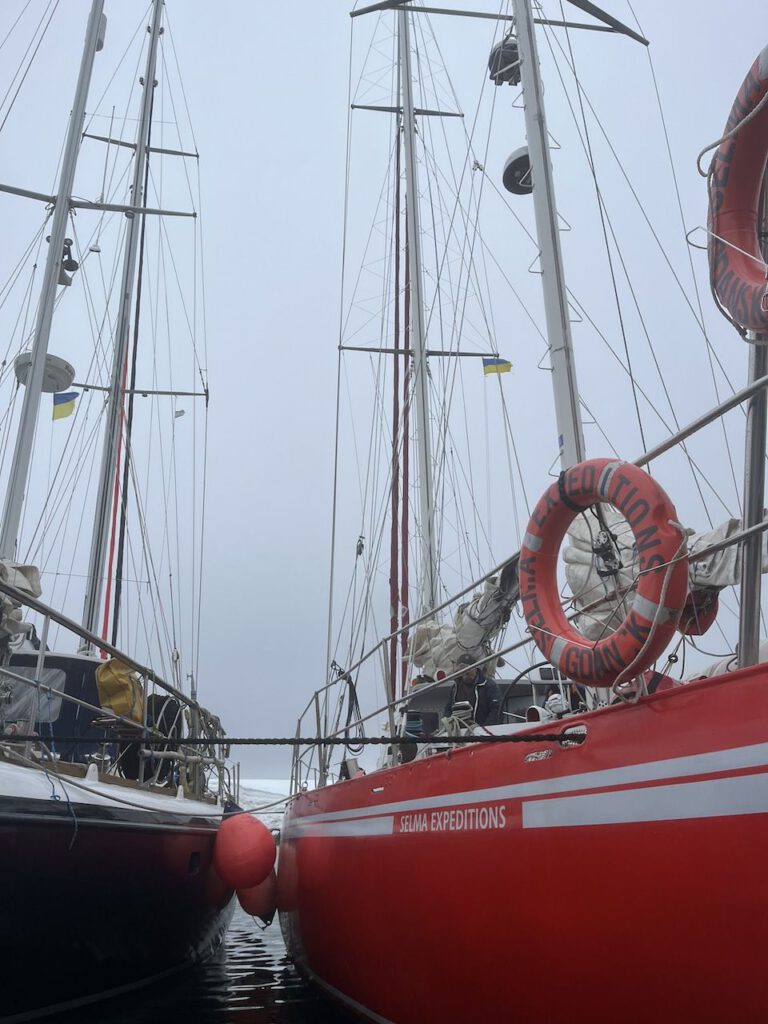
A warm welcome
Piotr is invited to the ward in the evening. It’s a special day. It is February 24th. Today marks the third year of the Russian war of aggression in Ukraine. Of course, this is extremely present here at the station, even though home is unreachably far away: it’s 15,168 km to Kyiv. However, many of the 26 station members currently working here were at the front before the season and / or will have to return to the front after the changeover in April. They all fear for their families and friends back home. This painful reality is a daily reality for the people here, especially on this day. It also catches up with us in our happy and peaceful “bubble” on board the Selma. We may be at the end of the world down here in the deep south, but we are still a part of it.
All the more moving is the warm welcome we receive and the hospitality we are shown during these two days: we are given lots of fresh bread and a large pot of borscht, a detailed tour of the entire station and insights into its history and research work. The former British station has been run by the Ukraine since 1996 and is named after the Ukrainian geologist, mineralogist, geochemist and biochemist Vernadsky.
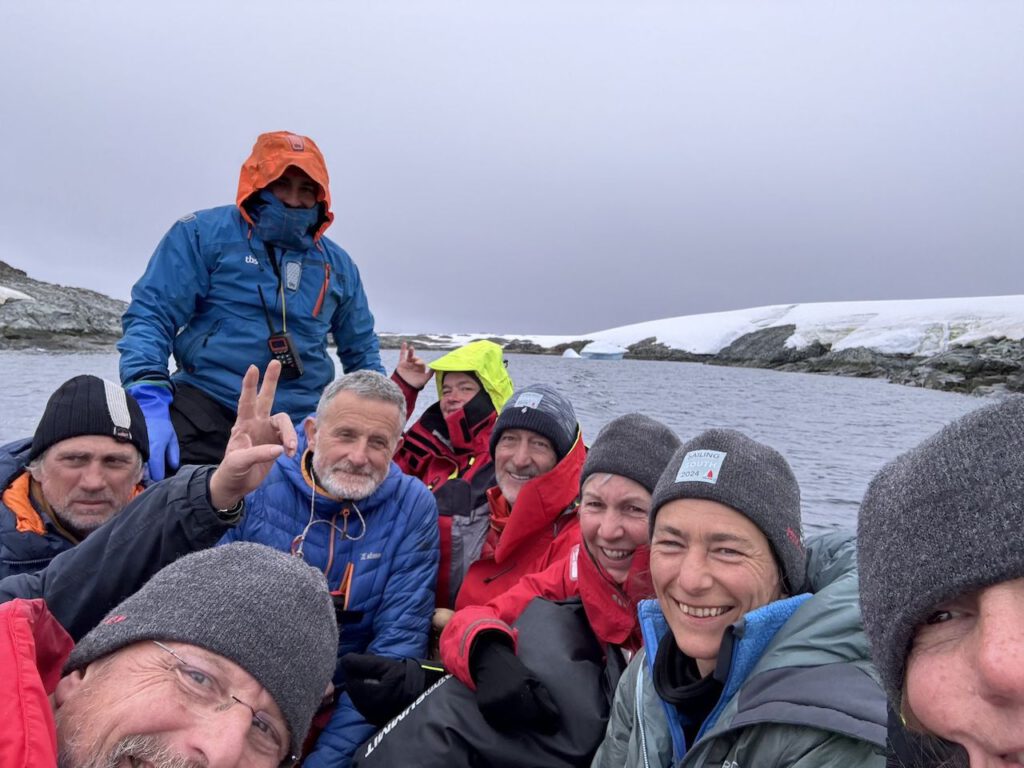
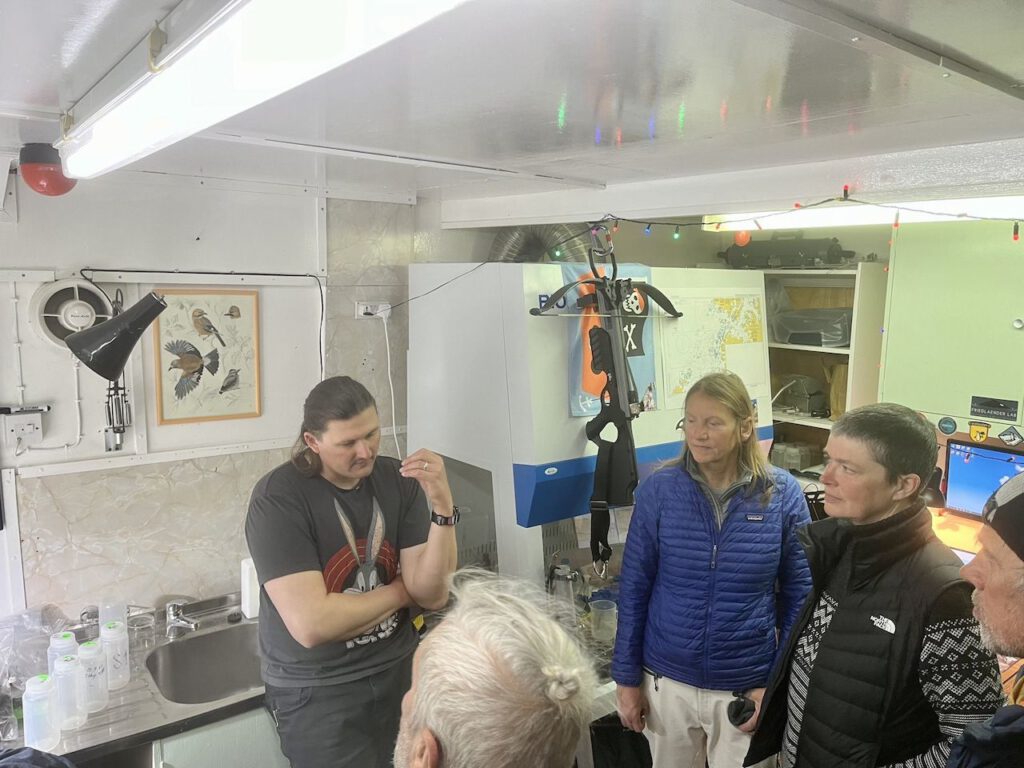
Historical pictures on the walls fill the corridors of the station, the group photos of the respective wintering teams of the station’s history – whether British or Ukrainian – hang in the staircase to the upper floor. We are allowed a glimpse into the laboratories of the biologists, seismologists, geologists, meteorologists … We get a hint of the complex relationships between climate change, warmer temperatures, migrating penguins, their guano, the subsequent growth of first-colonizing algae … and the resulting changes to the islands and landscapes of the Antarctic Peninsula. The station, which shares Galindez Island with a colony of Gentoo penguins that has been growing for years, can tell you all about it.
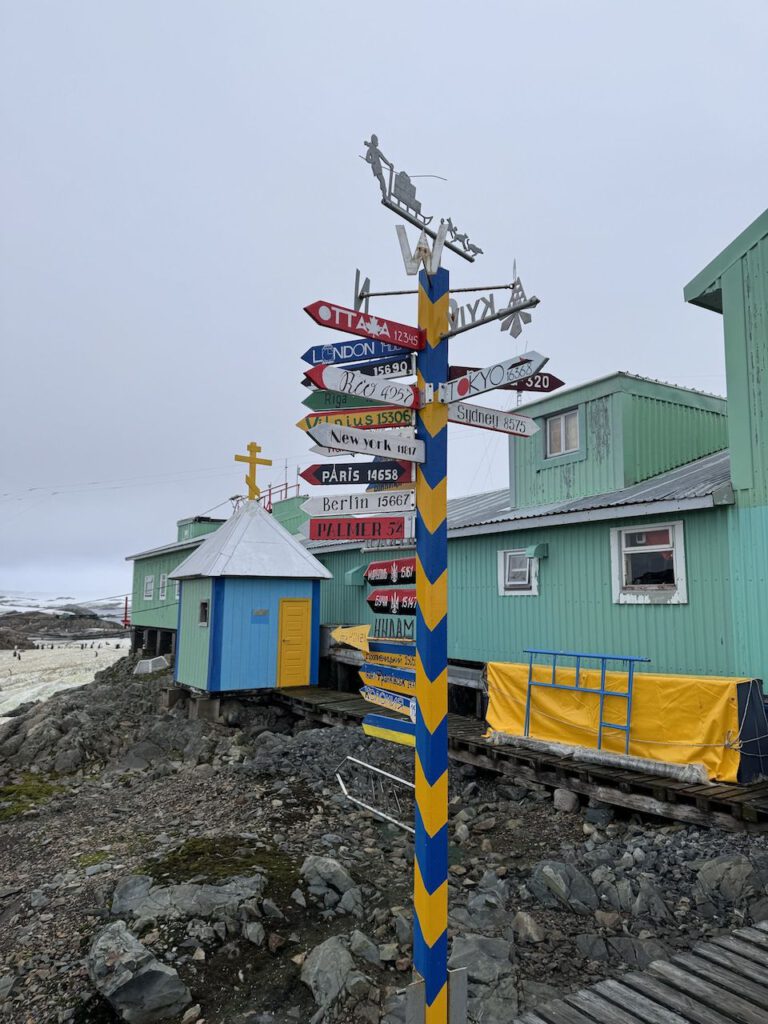

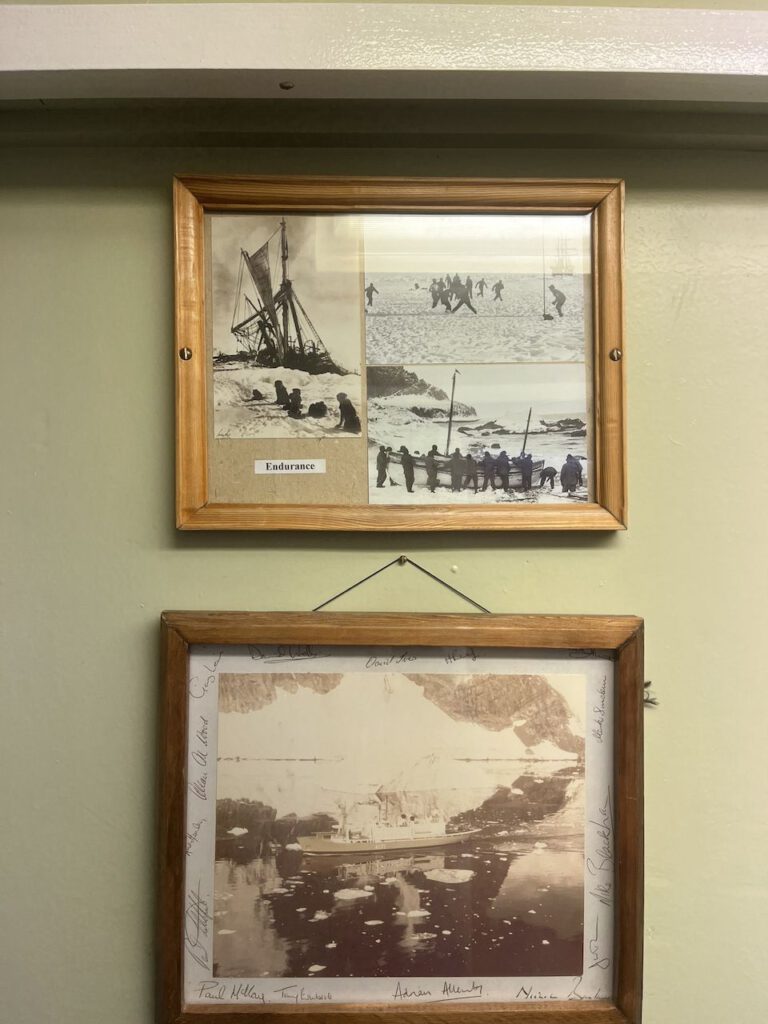
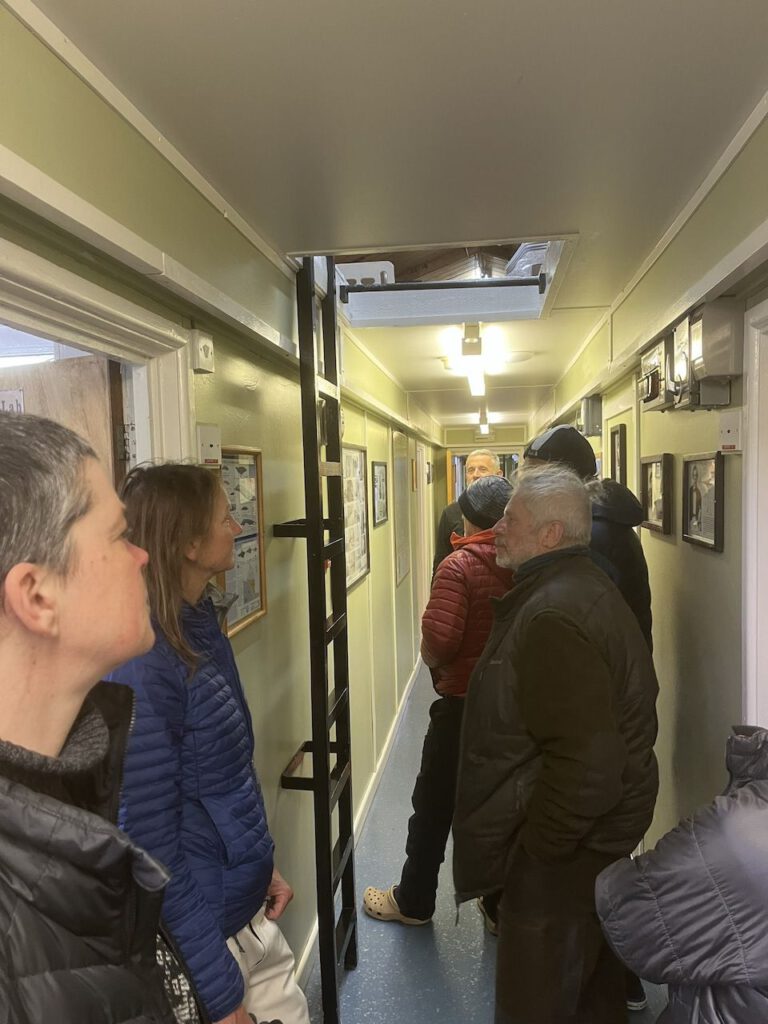
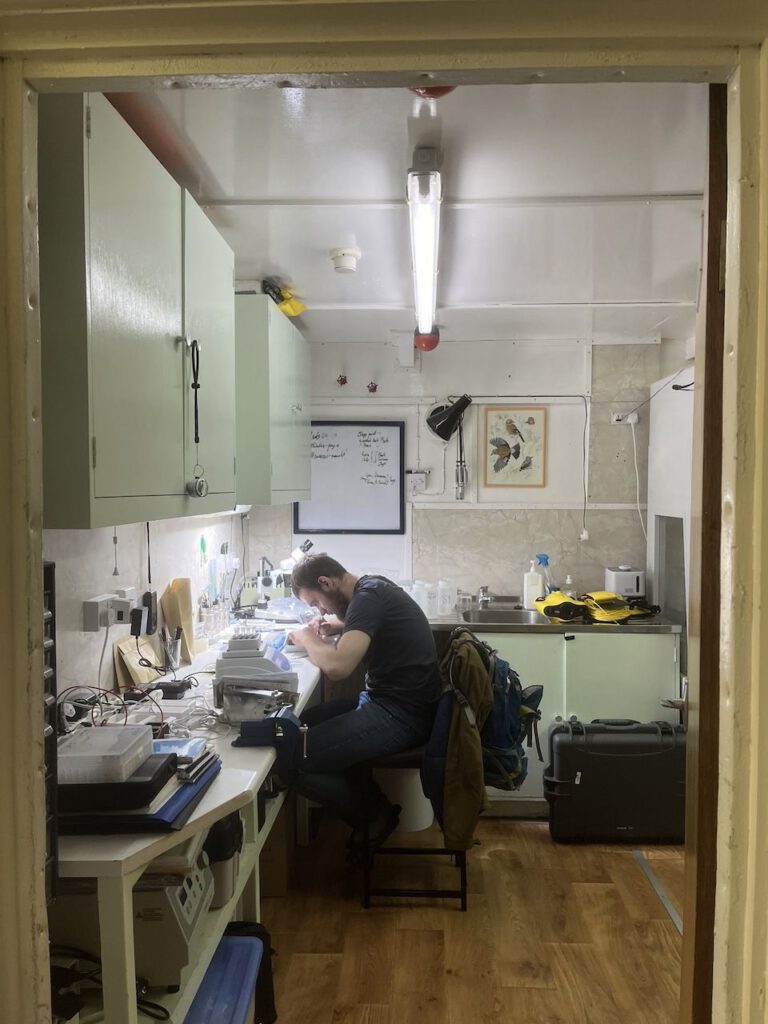
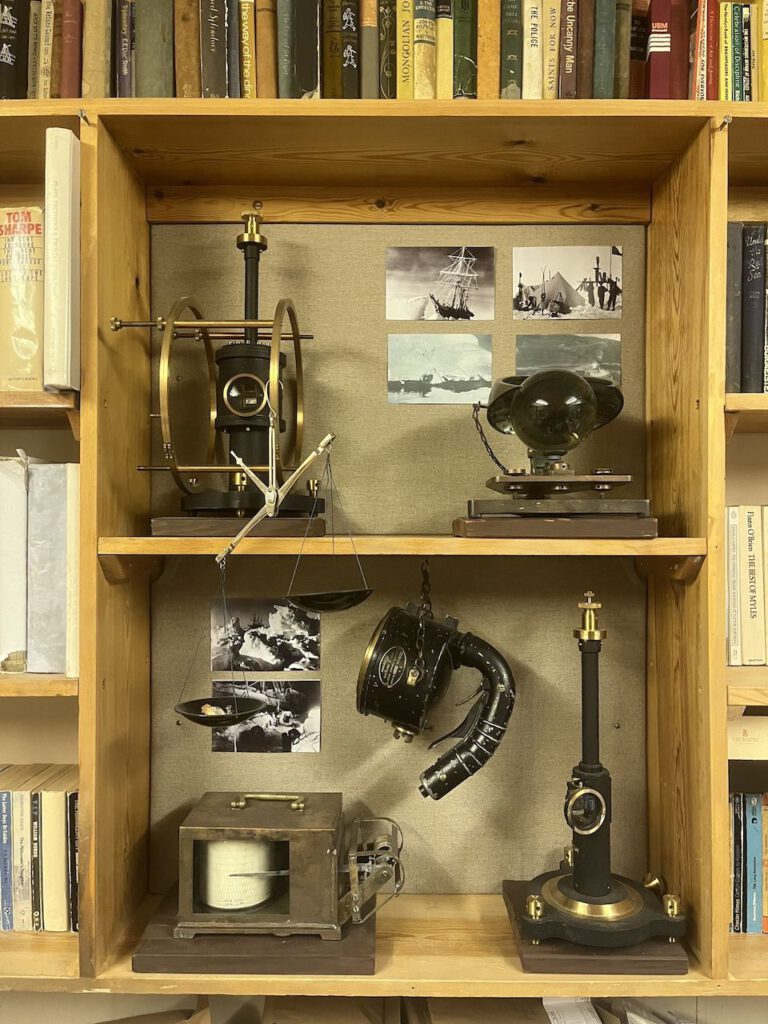

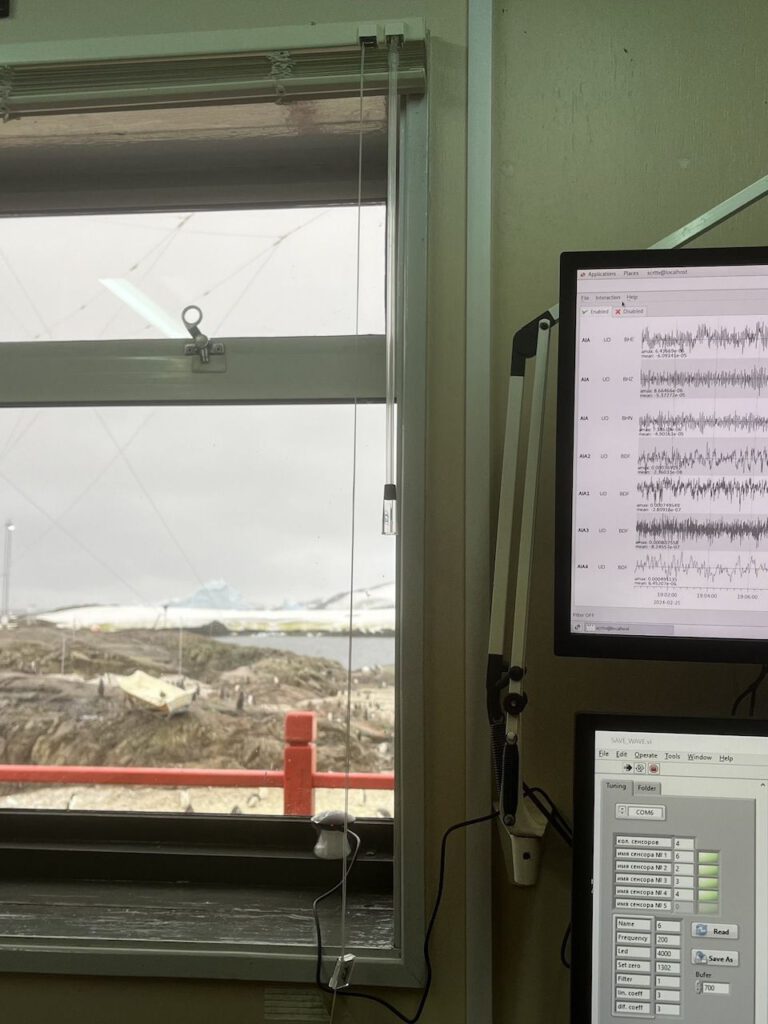
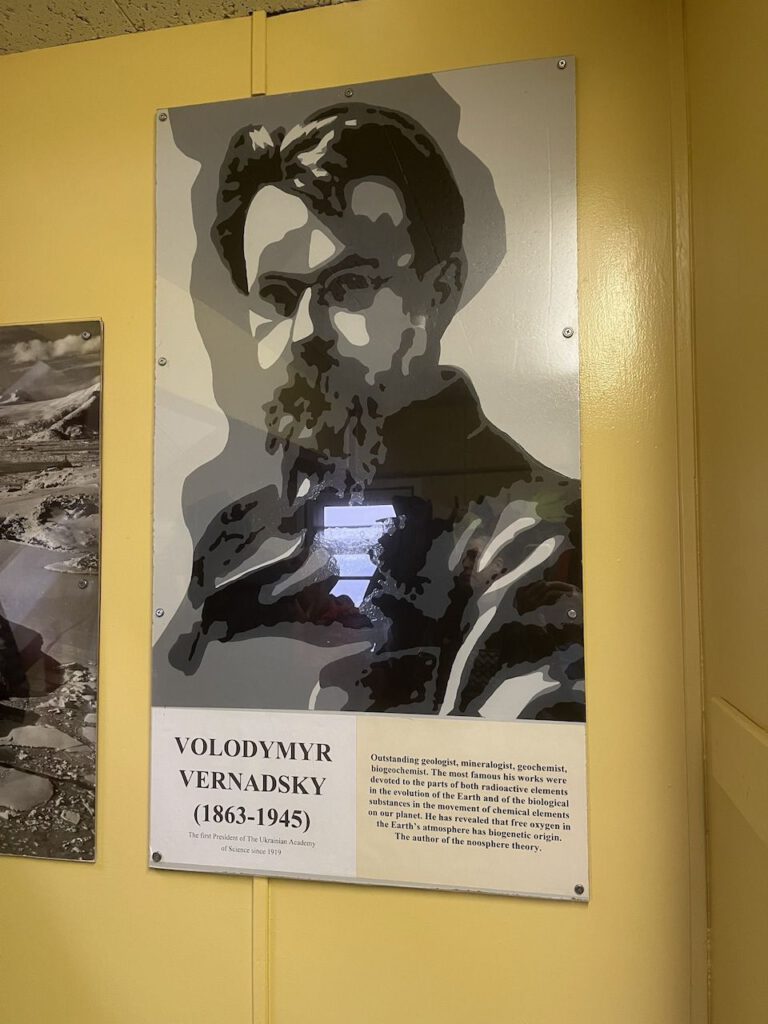
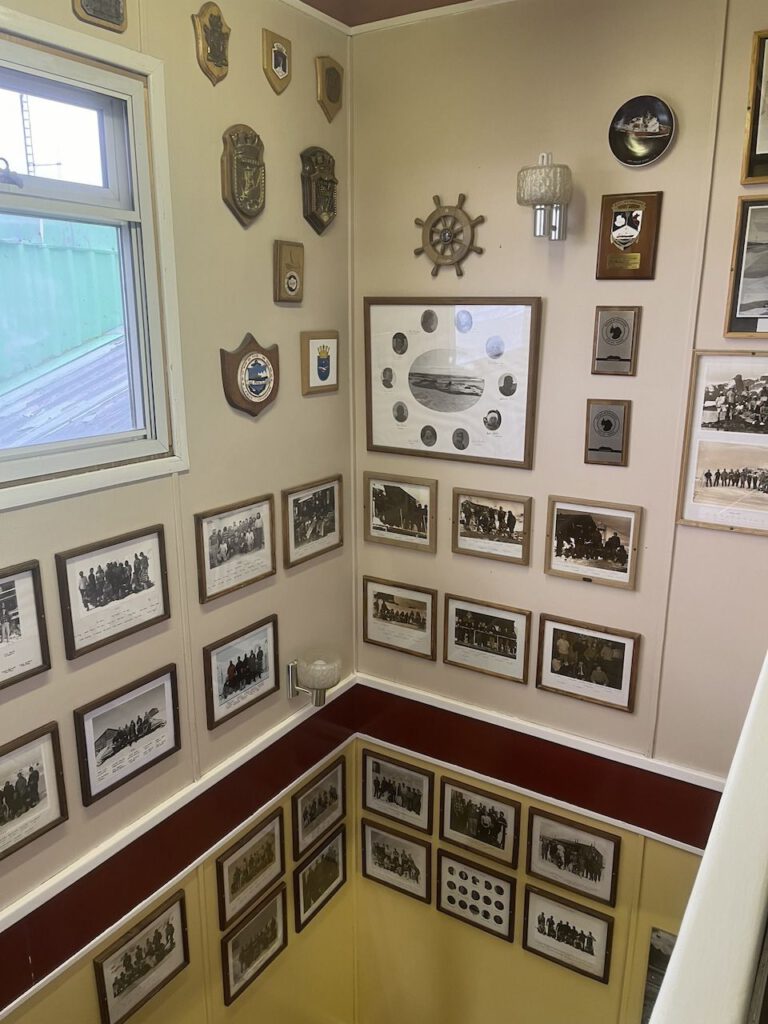
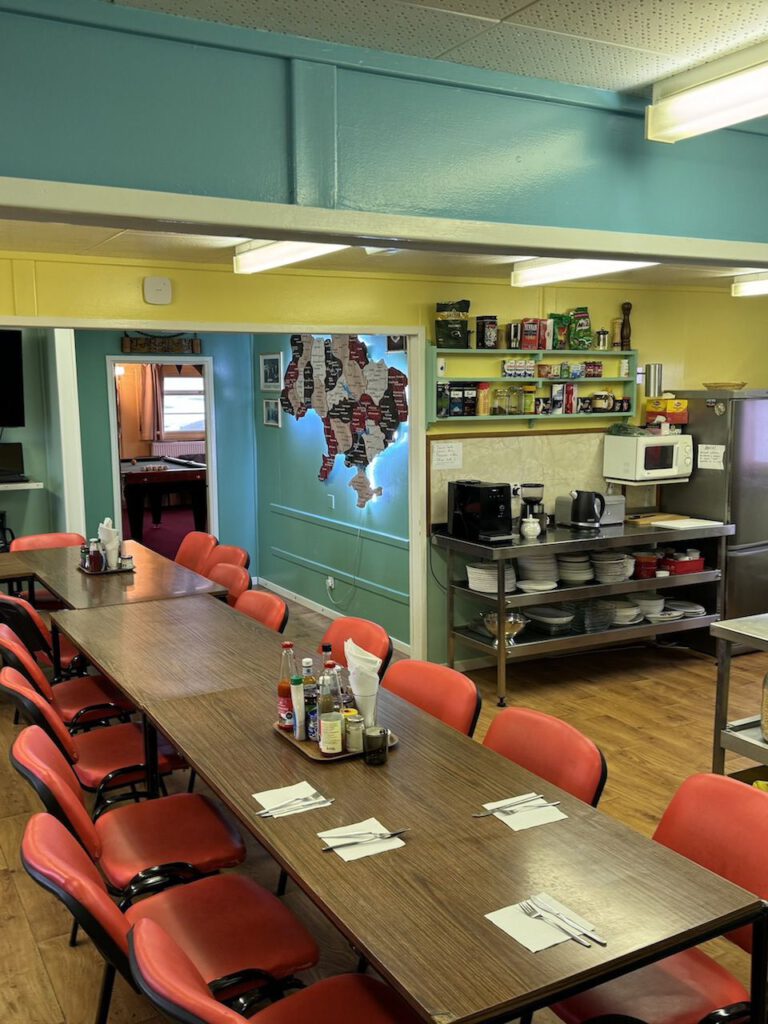
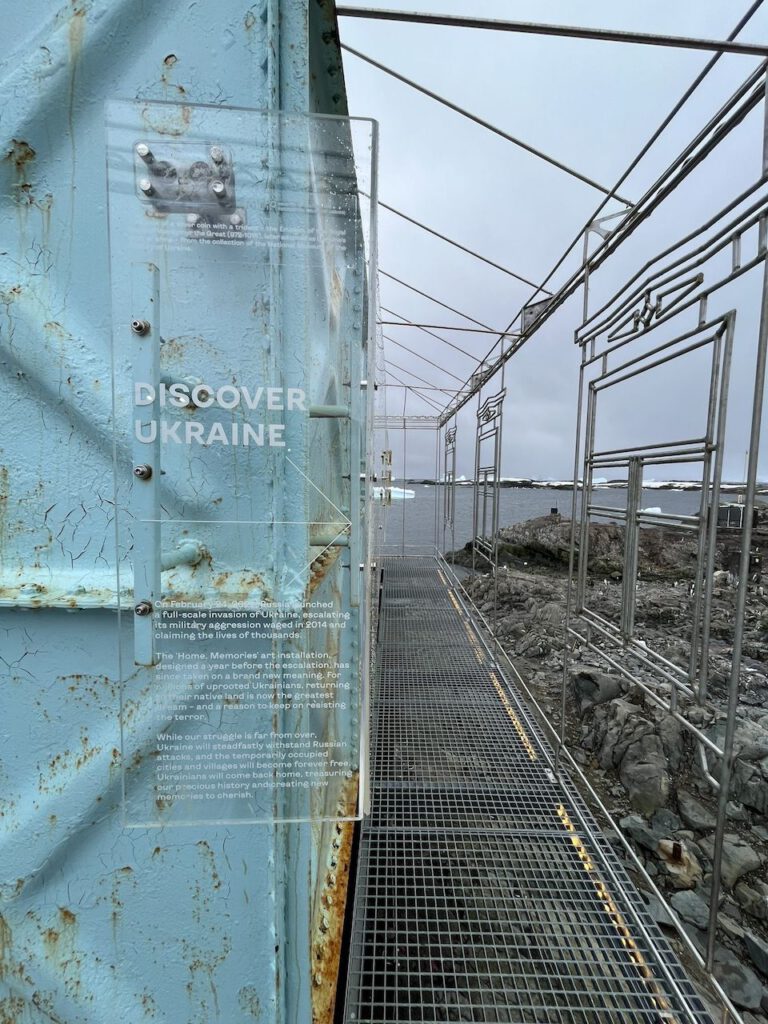
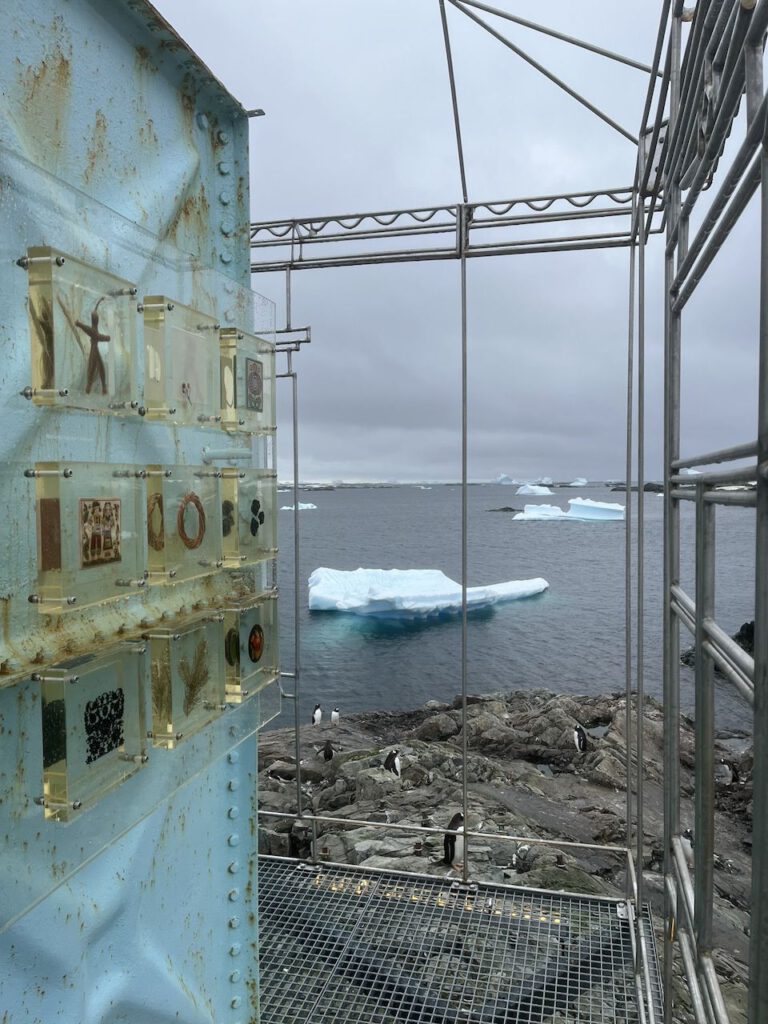
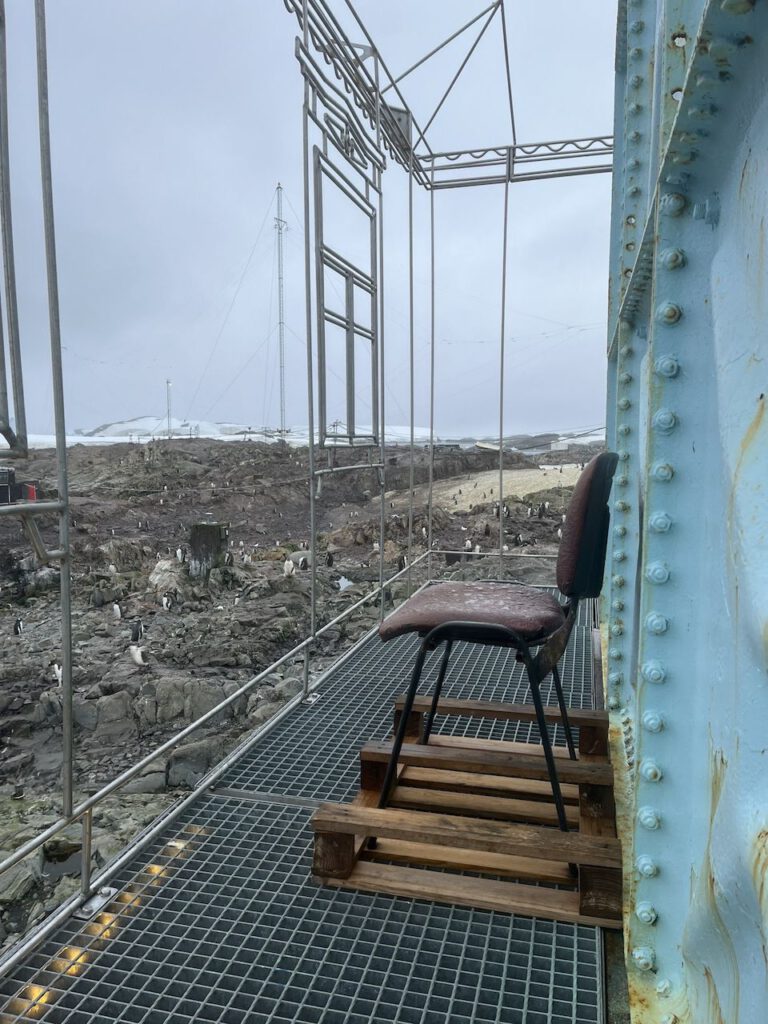
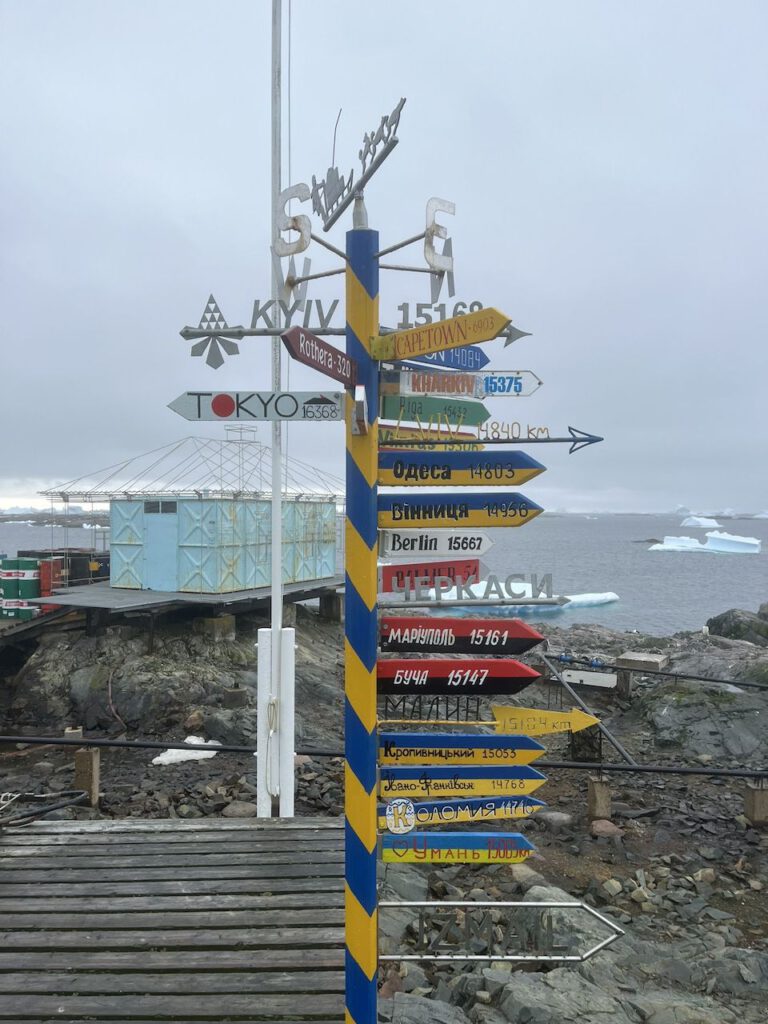
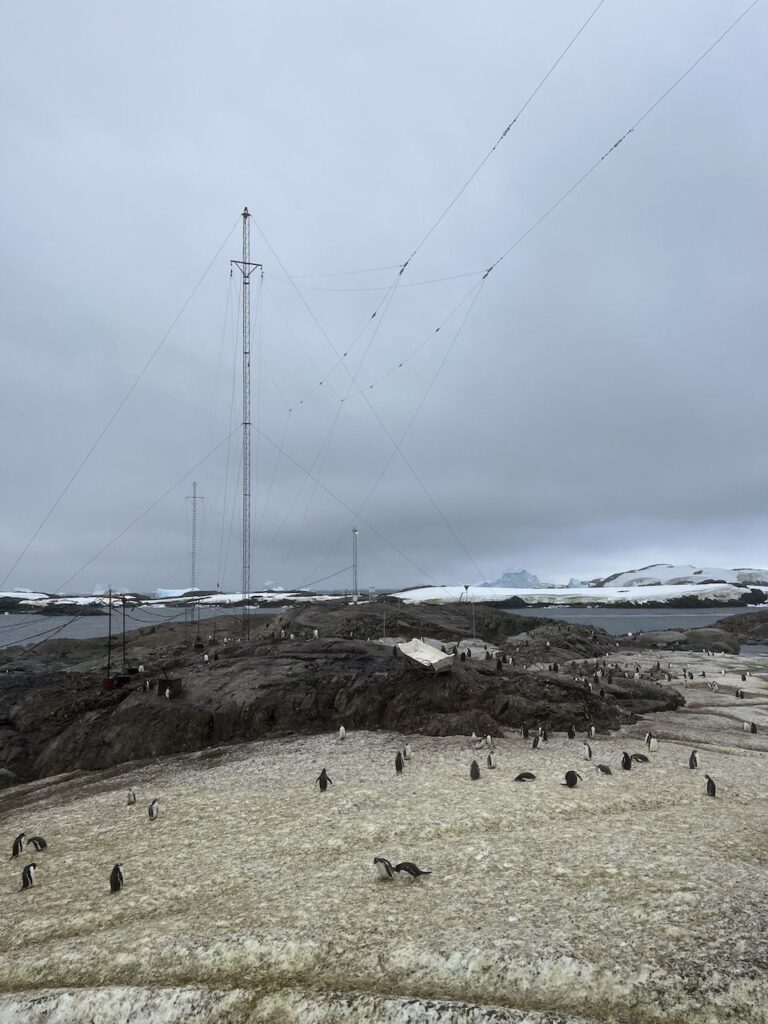
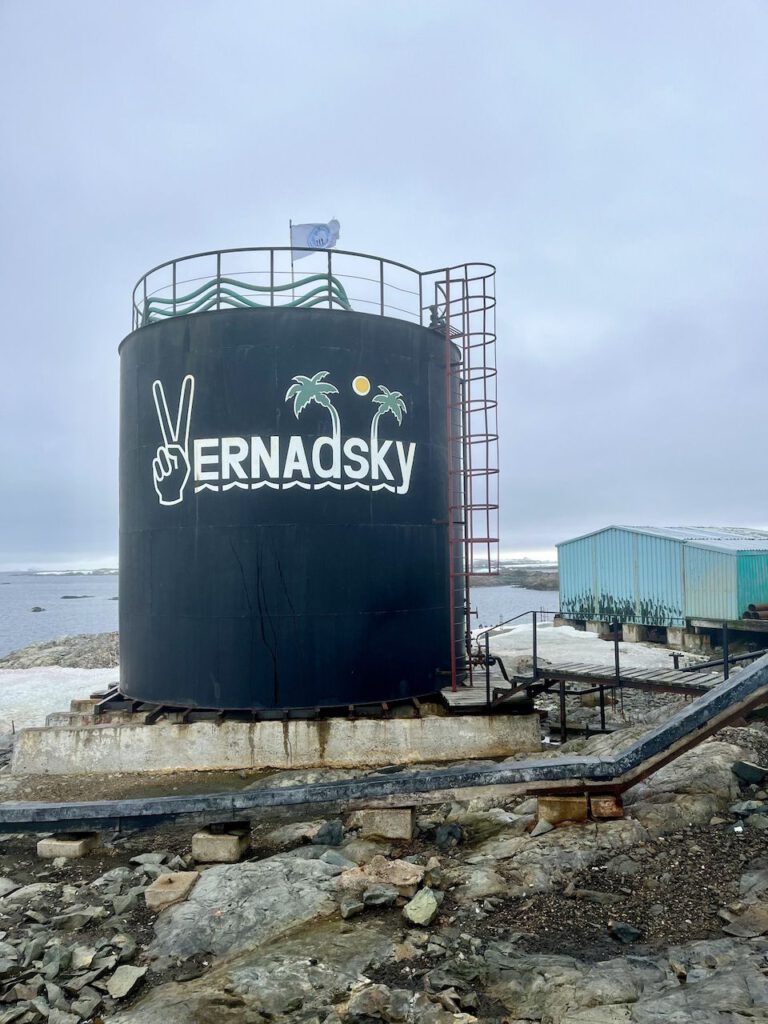

Wellness
But the best part is the hot shower followed by a visit to the sauna.
After a long time, we enjoy the luxury of hot running water. The station’s women’s shower is currently mostly unused due to a lack of female staff, or is used as a temporary storage area for various scientific samples – numerous numbered bags are piled up next to our clothes. A curious glance reveals the contents: these are Ivan’s mosses, which are awaiting further scientific examination.
But the sauna – or banja – is the biggest thing! A small wooden hut on a rock about 300 meters from the station building is waiting for us. There are two ways to get there: by land through the middle of the penguin colony or by boat. We choose the sea route and the dinghy. An adventurous, somewhat weathered wooden ladder leads up a rock to the hut. The steps are slippery, as is the forecourt. Like the ladder, the small wooden deck is occasionally used by penguins, which stand, lie and call all around us, right next to and behind the sauna. The scenery is simply incredible.
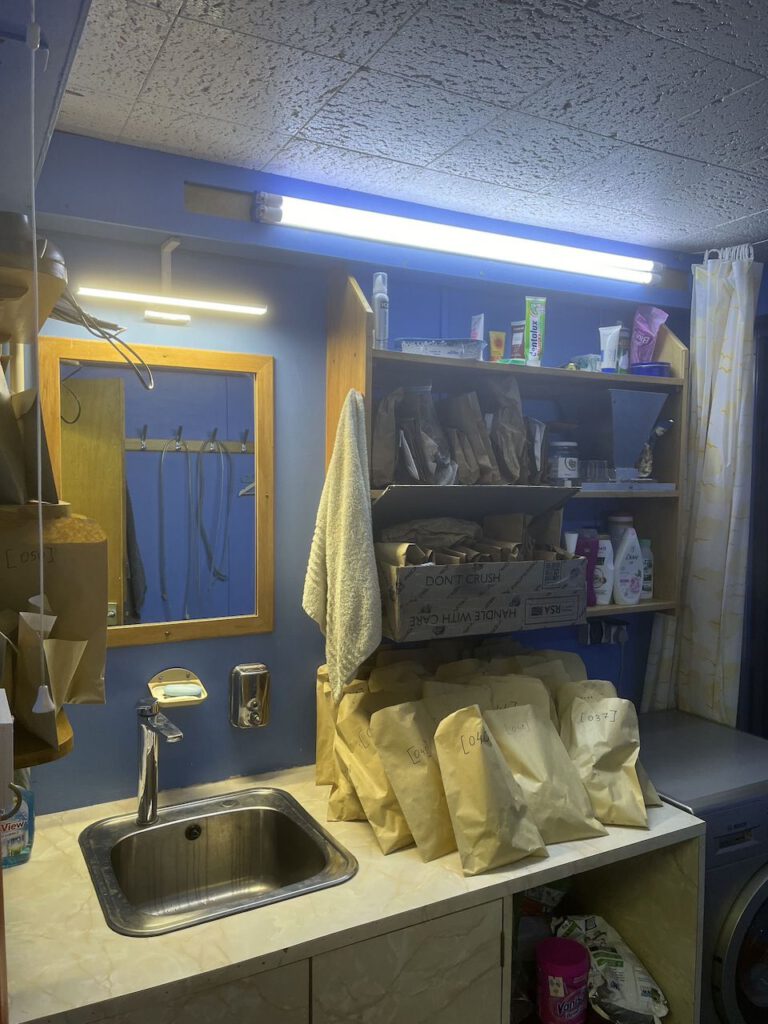
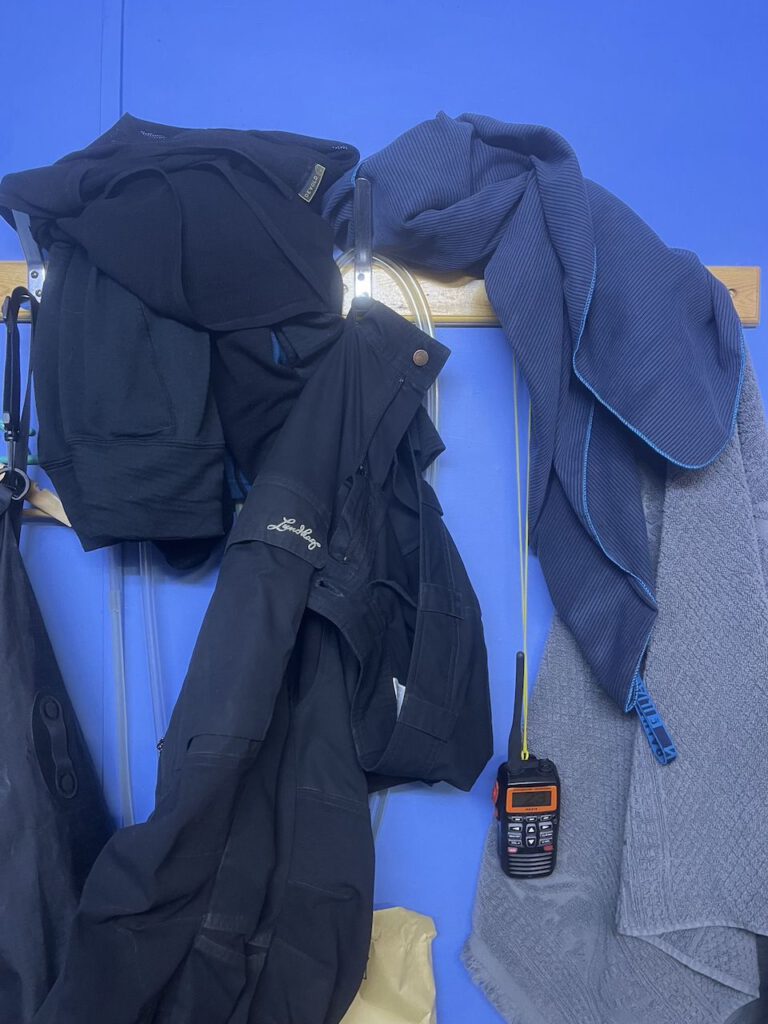
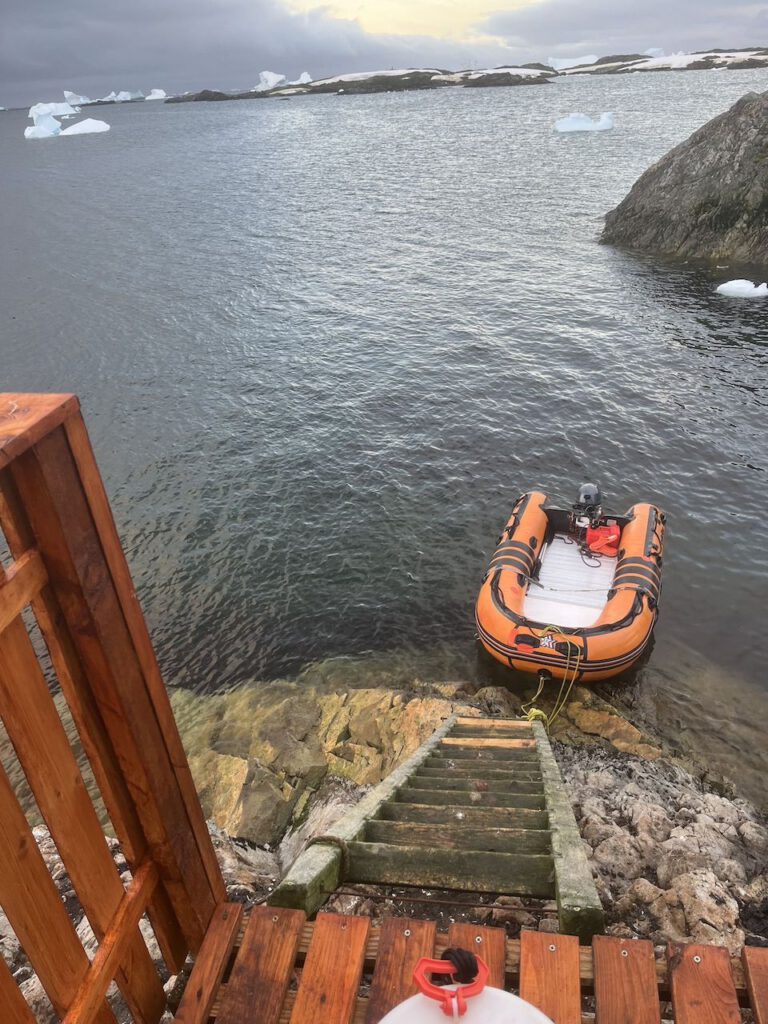
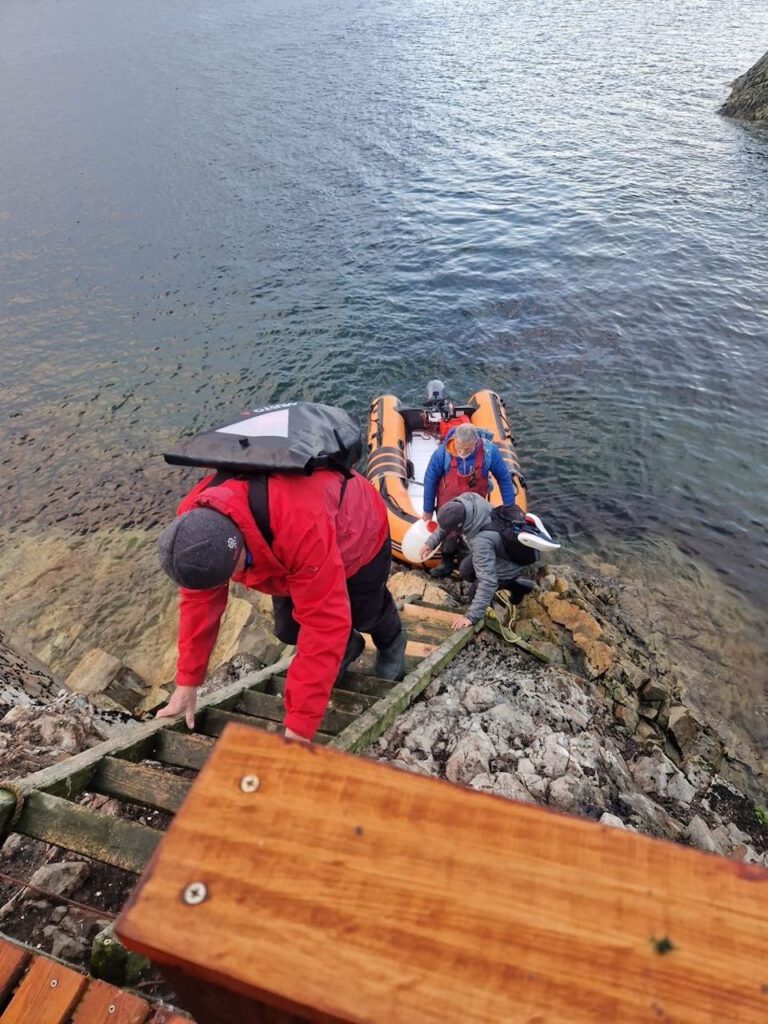
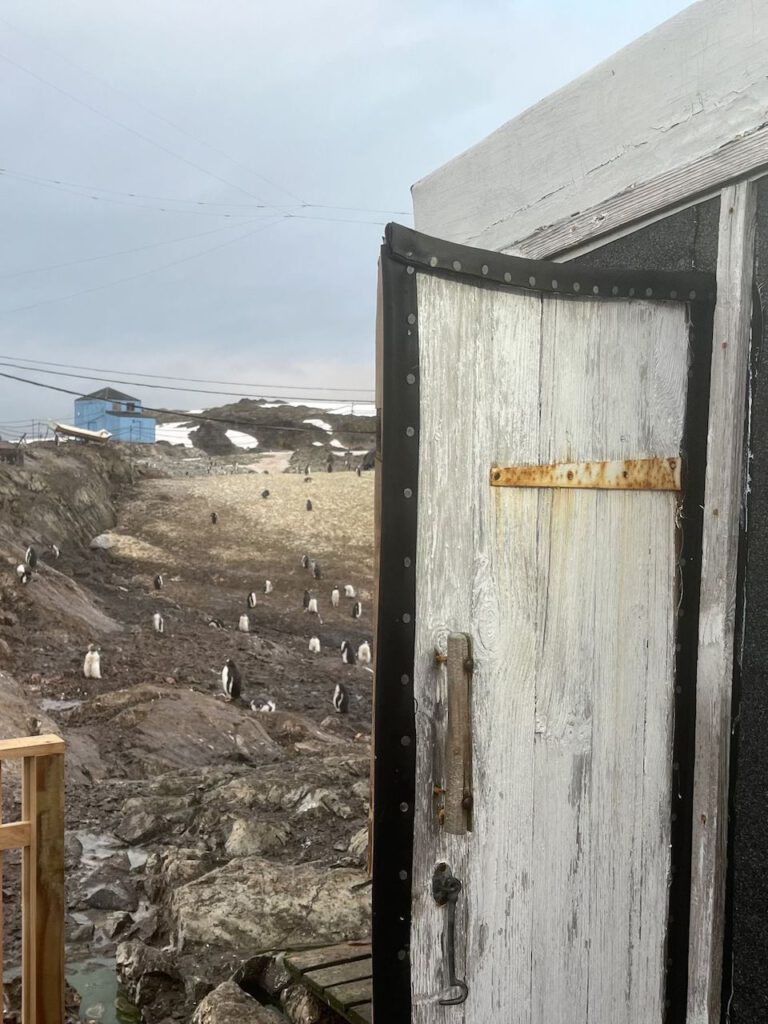
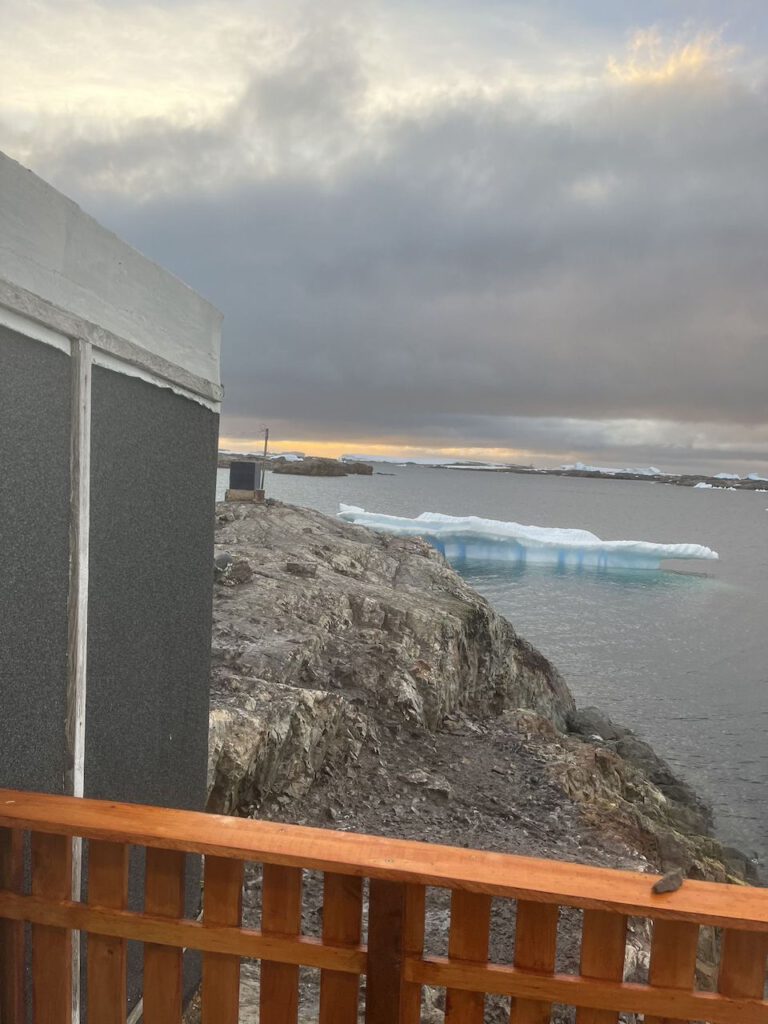


We quickly get rid of our wellies and clothes and slip into the cozy warmth. Enjoy the 90 degree dry, crisp heat, the steaming infusion. Afterwards, we stand outside steaming in the frosty cold. Think about it for a moment and then scramble down the slippery steps, over the rocks and dare to dive into the Antarctic Ocean. Afterwards they are electrified, full of energy, everything tingles like a thousand fine needles. We stand outside in the twilight grinning, enjoying a cold beer and the view of the sea, icebergs and penguins. We warm up in the hut and then slip back onto the wooden benches by the hot stove. We indulge in this luxury three times before moving over to the station’s bar, cleaner and warmer than we have been for a long time. Here we are welcomed with music, drinks and a small buffet. It was a wonderful evening together with our Ukrainian hosts and the crew of the Mon Coeur – with beer, wine, cocktails, pool billiards, stimulating and moving conversations that not only accompanied us during the midnight crossing to Selma.
Wordie House
We start the next morning with a late, sumptuous breakfast and look forward to a day here in Vernadsky. No anchoring, no watches, no cold hours at the helm… just a whole day off. Free, so to speak. Well, not quite. First we get a delivery of fuel. Four heavy 200 liter barrels of diesel are winched on deck. While Piotr takes care of filling our tanks in the following hours, we set off on a kayak trip.
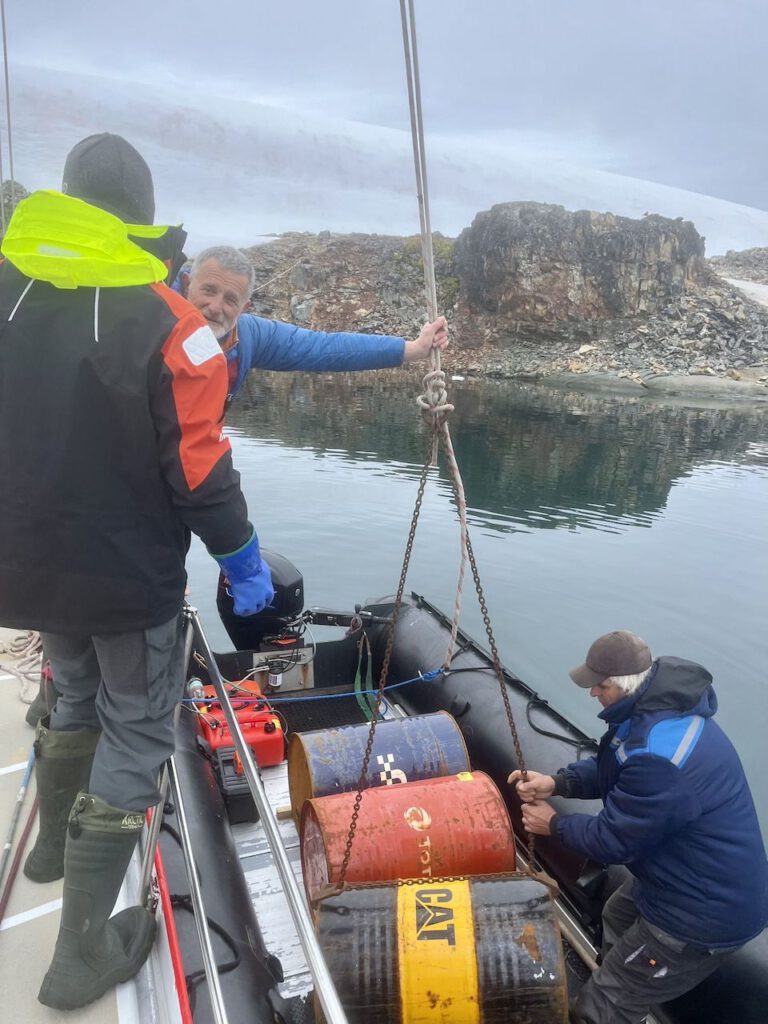
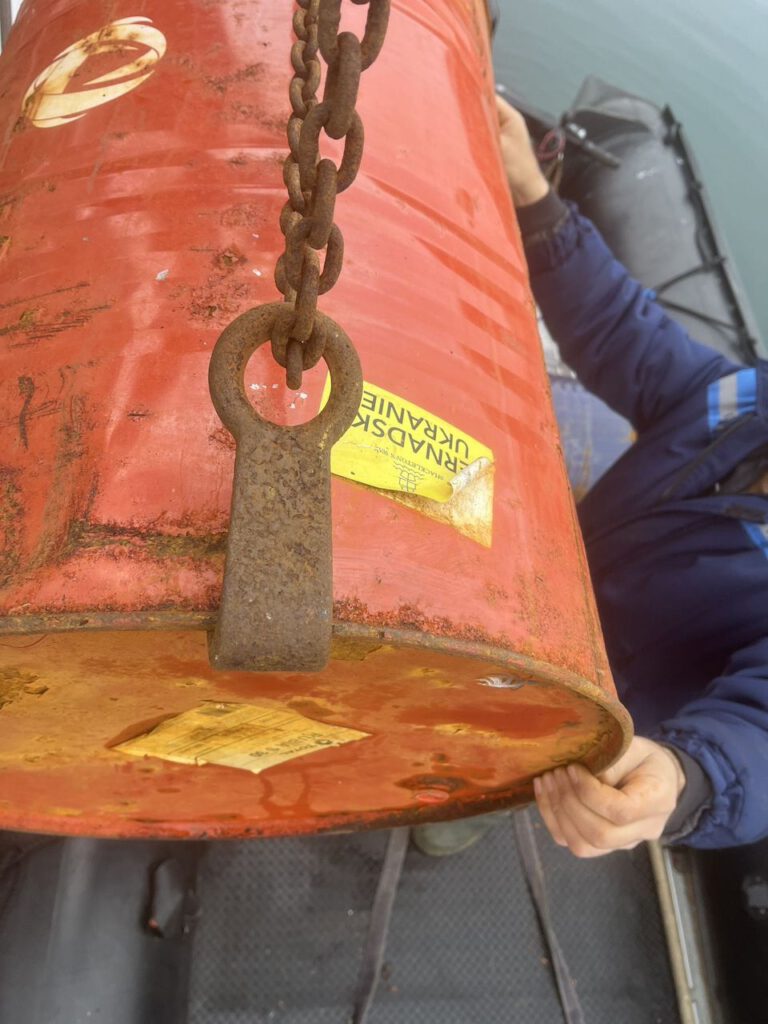
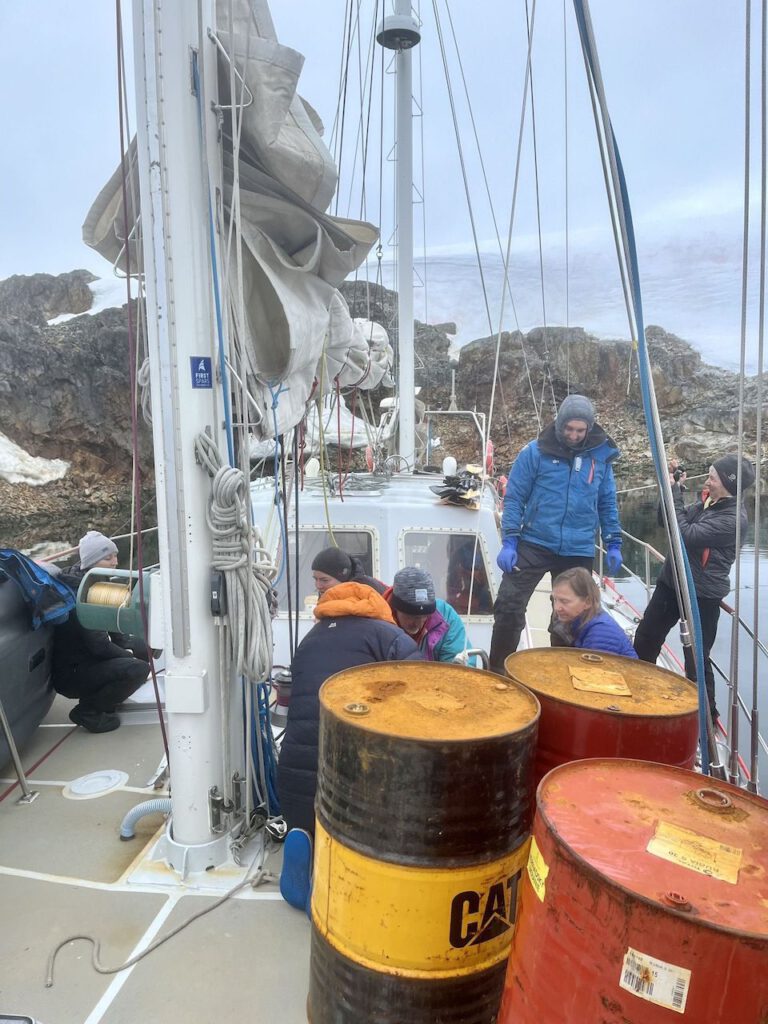
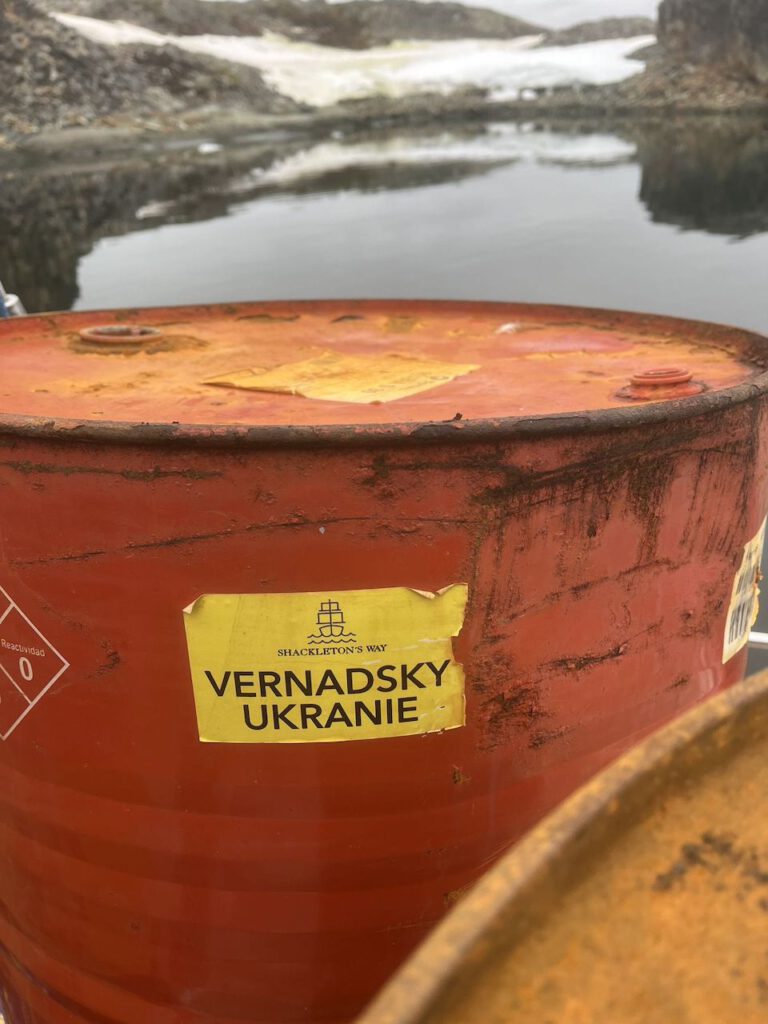
We paddle to the neighboring Wordie House on Winter Island. The former British Faraday Research Station is a historical monument from the early days of Antarctic science, built in 1947 and closed in 1954. The former main building of Station F was named after James Wordie, a Scottish polar explorer and geologist who, among other things, took part in Shackleton’s Endurance Expedition as scientific director. The building stands on the foundations of a former hut of the British Graham Land Expedition 1935-1936.

Today, Wordie House is a small museum: visitors are taken on a journey through time, 70 years back to the early days of the British Antarctic stations. The rooms, all in their original condition, offer a small insight into scientific work and station life. Historical measuring instruments and scientific material in the workrooms, the workshop and equipment such as diving gear, snowshoes and dog harnesses bear witness to this. The kitchen, including supplies and food, would still be ready for use. The adjoining lounge is a living room and bedroom in one. Some of the jackets are still hanging on the beds, shoes are on the shelves. Games, books, darts and the guitar have provided variety during the long, dark winter months. I love these trips back in time, breathing in the smell of bygone eras that still lingers in the rooms. Sometimes you think you can still feel the presence of those who once lived here.
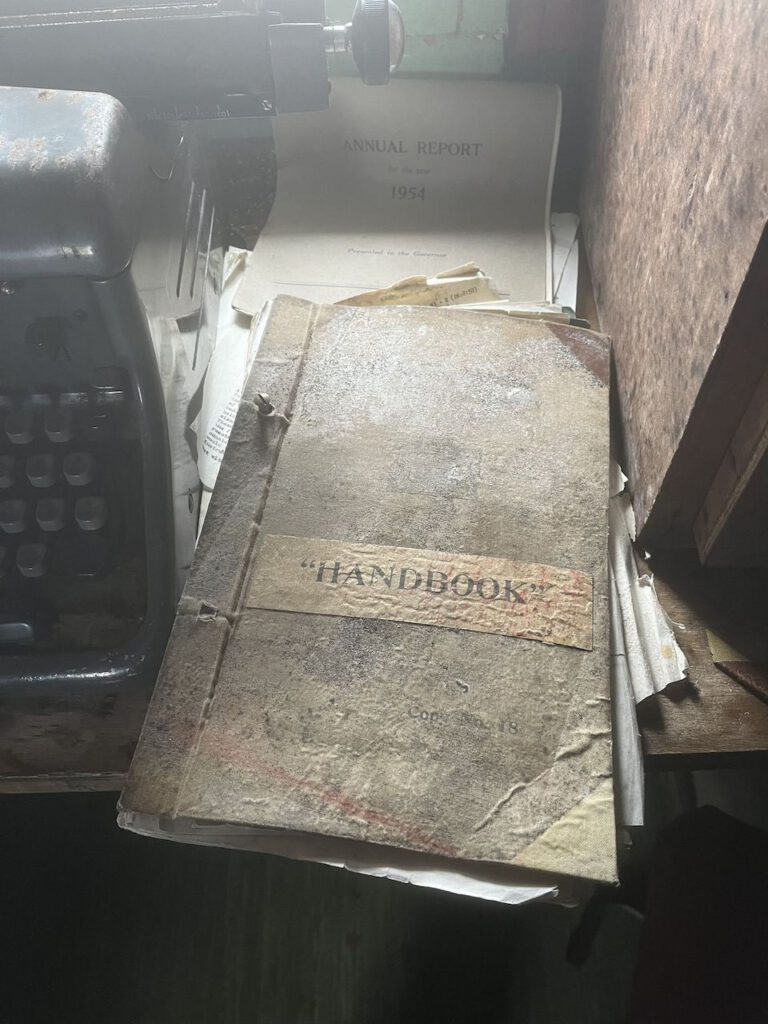
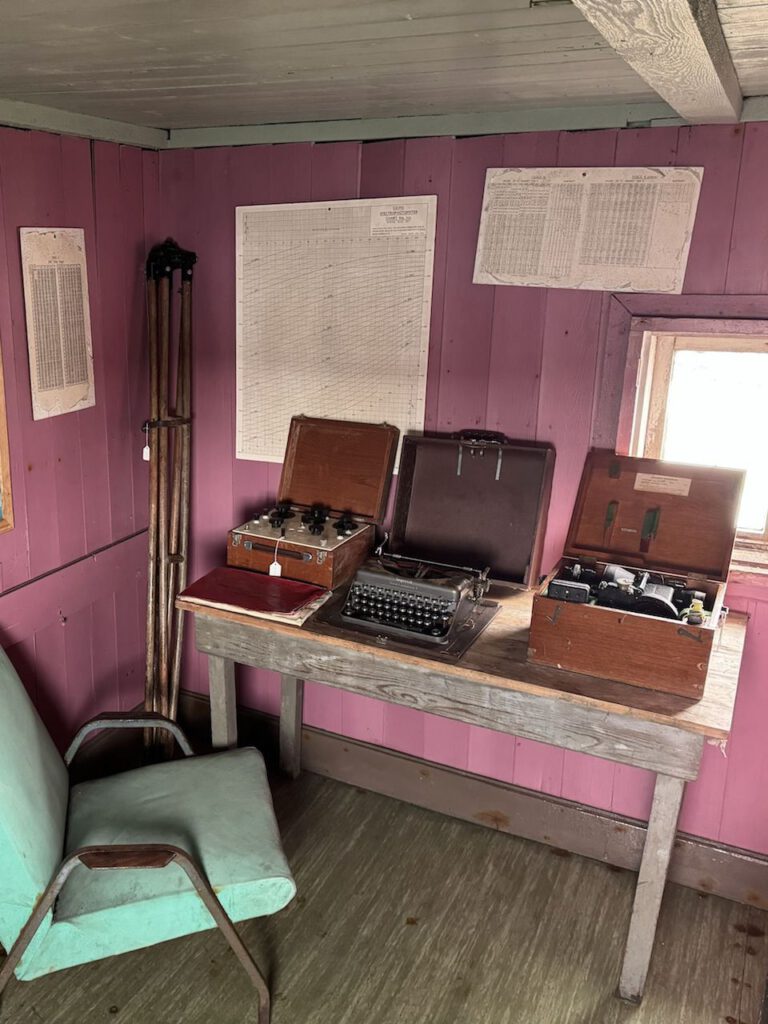
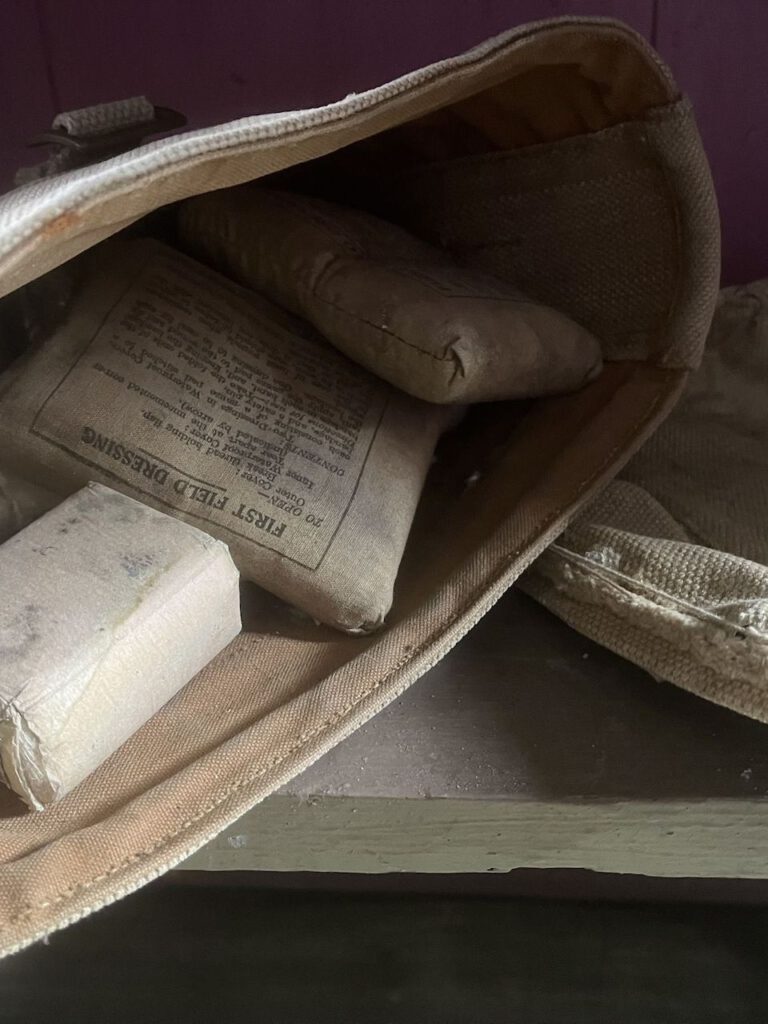
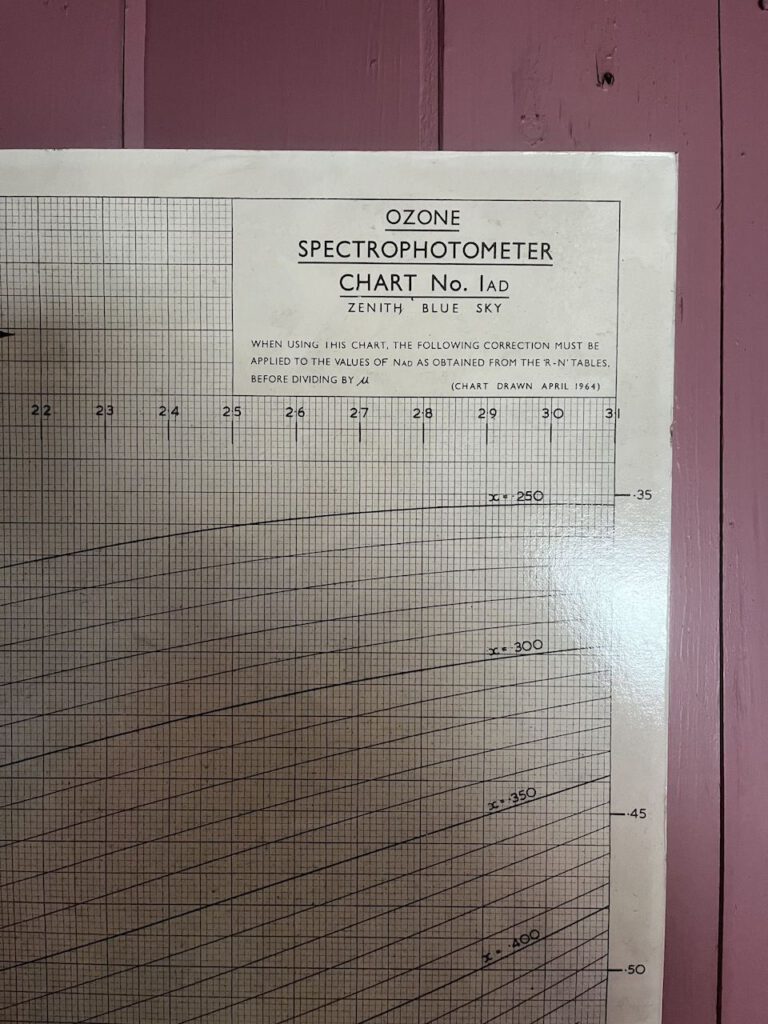
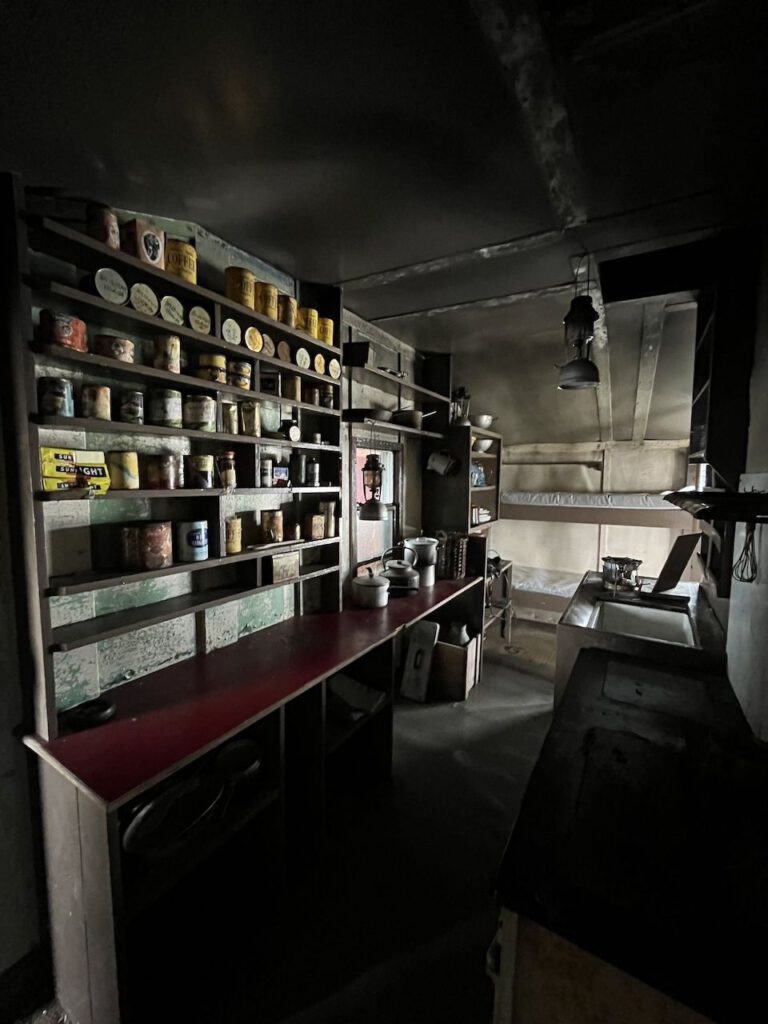
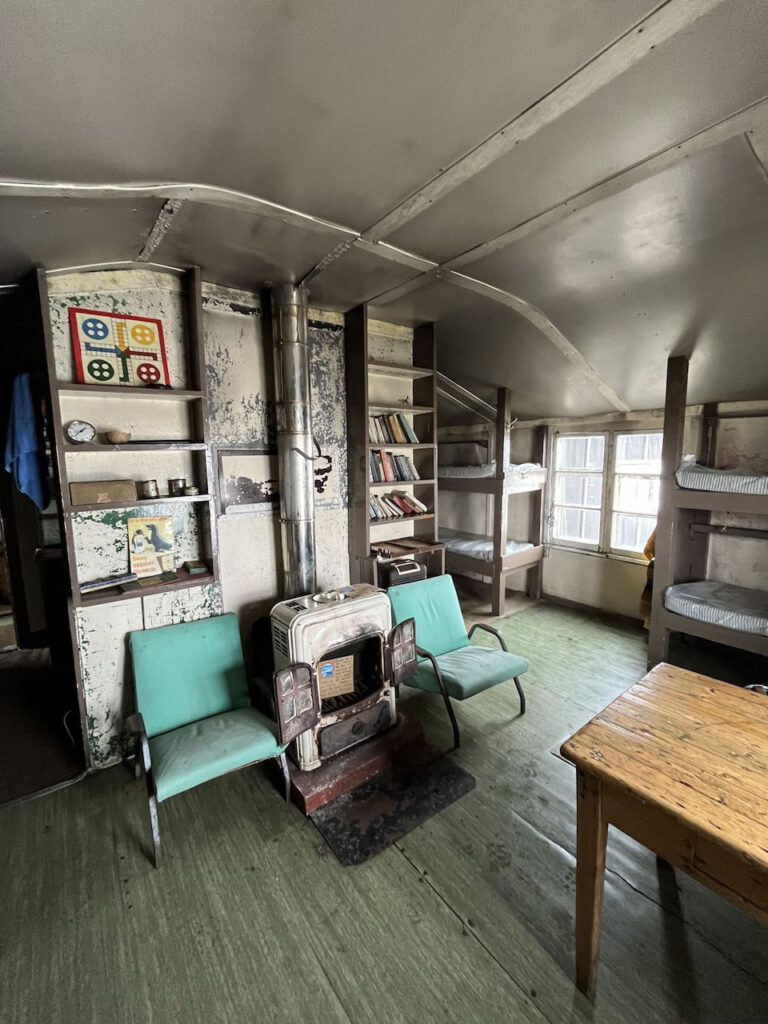
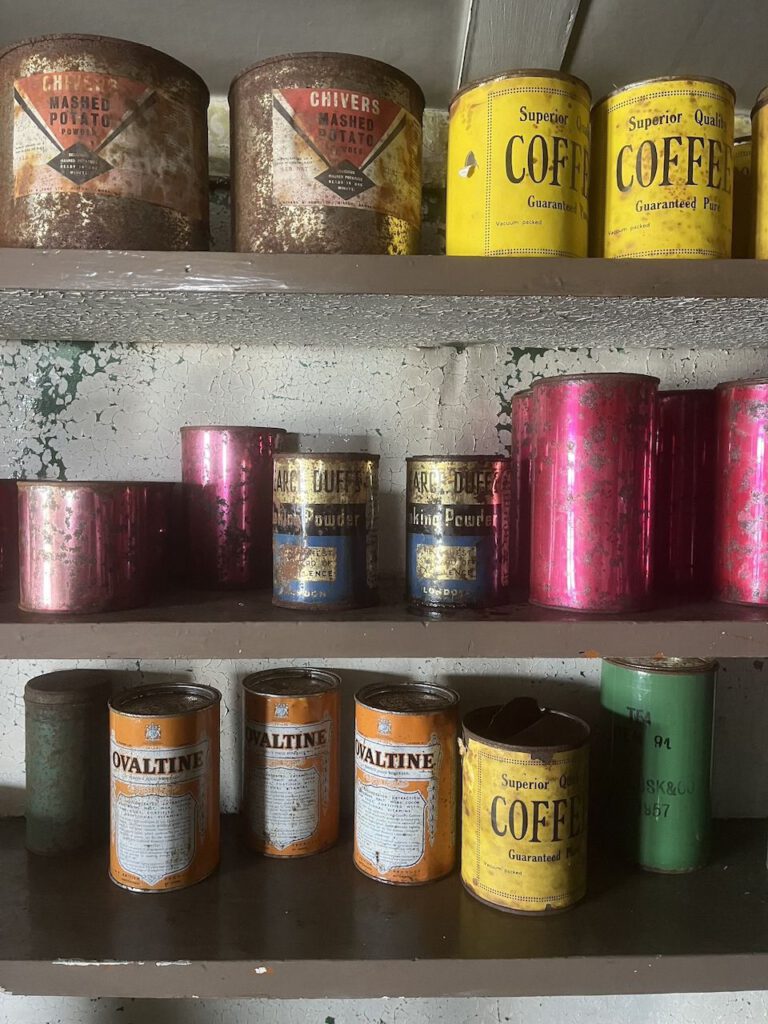
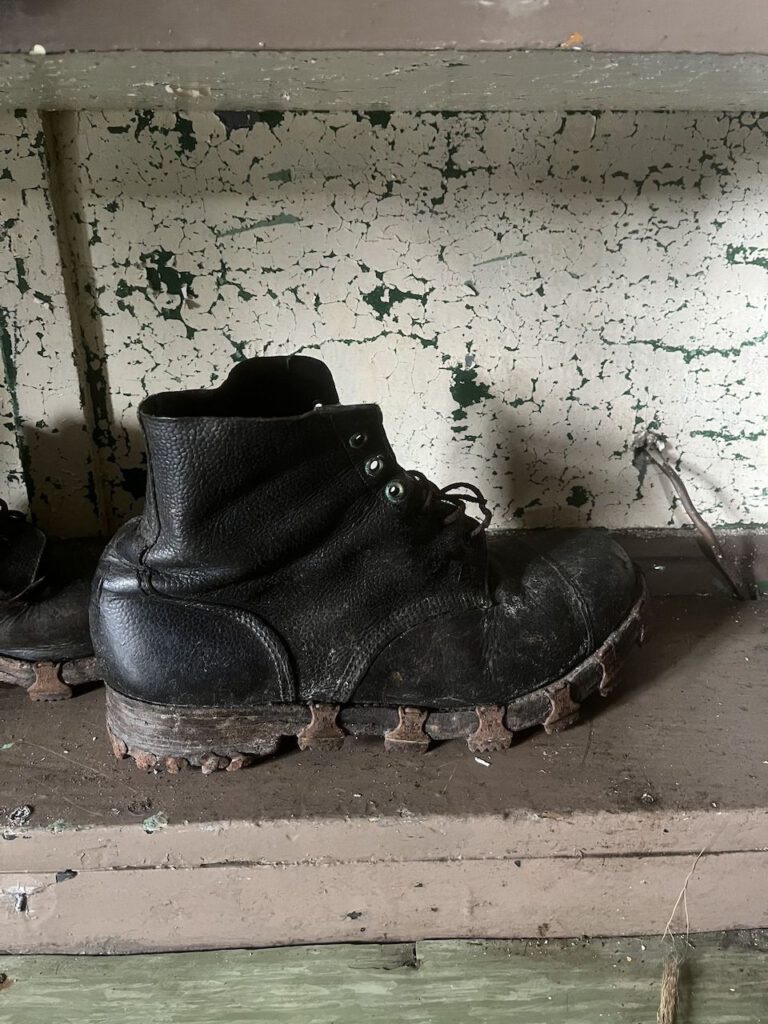

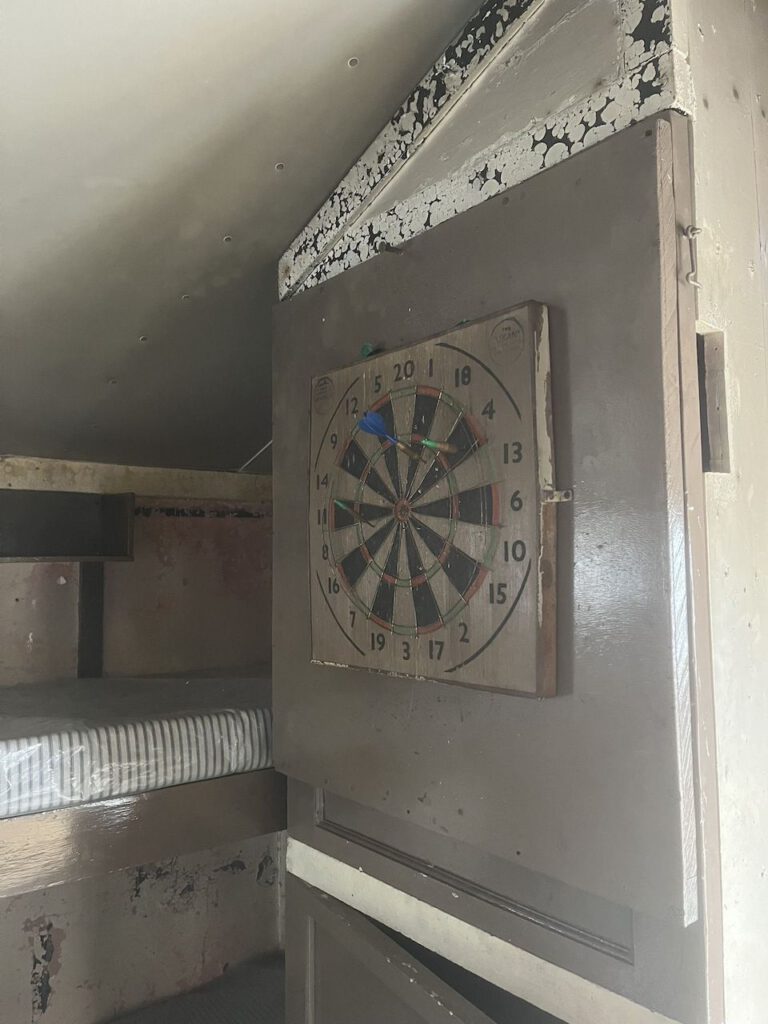
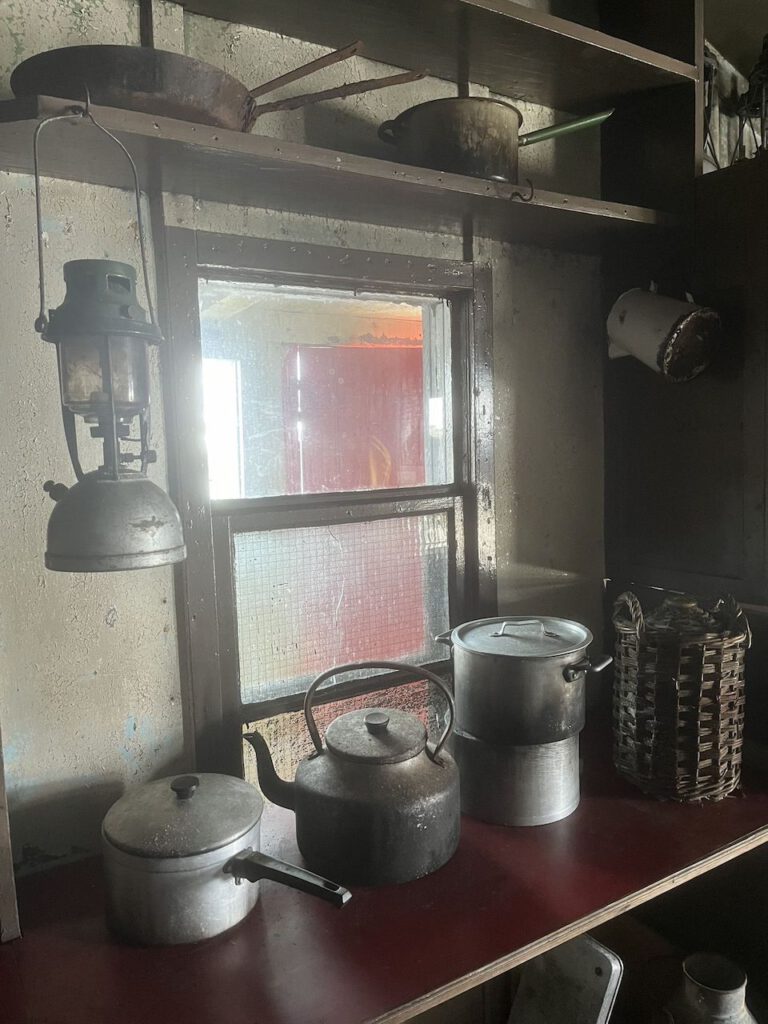

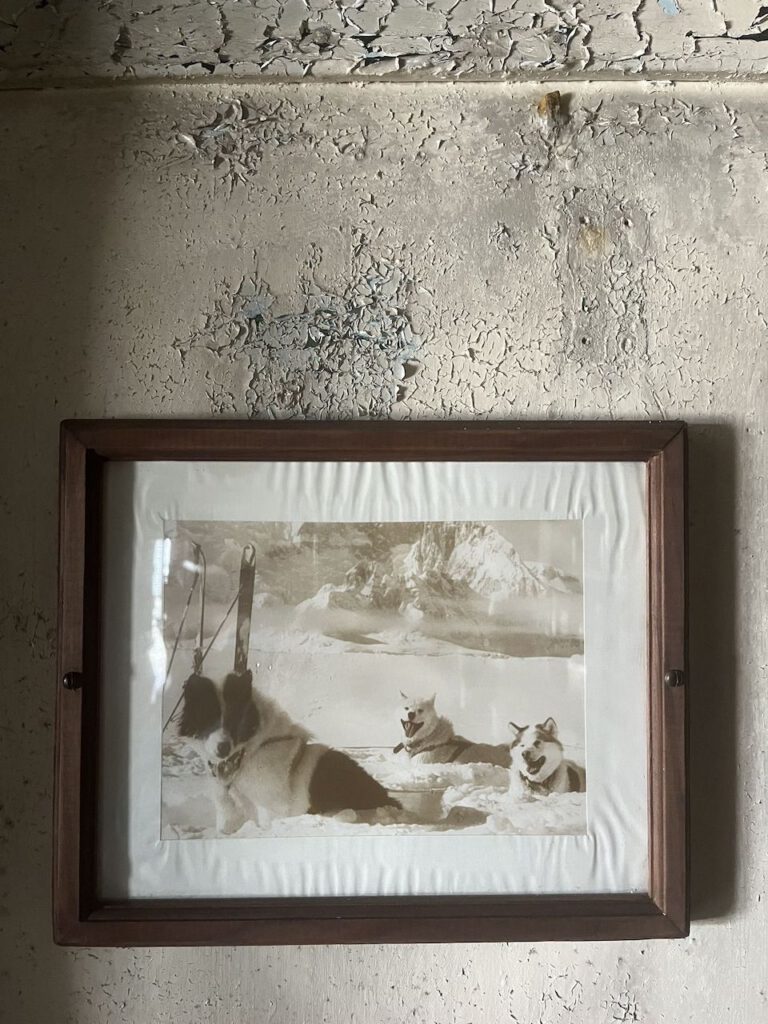
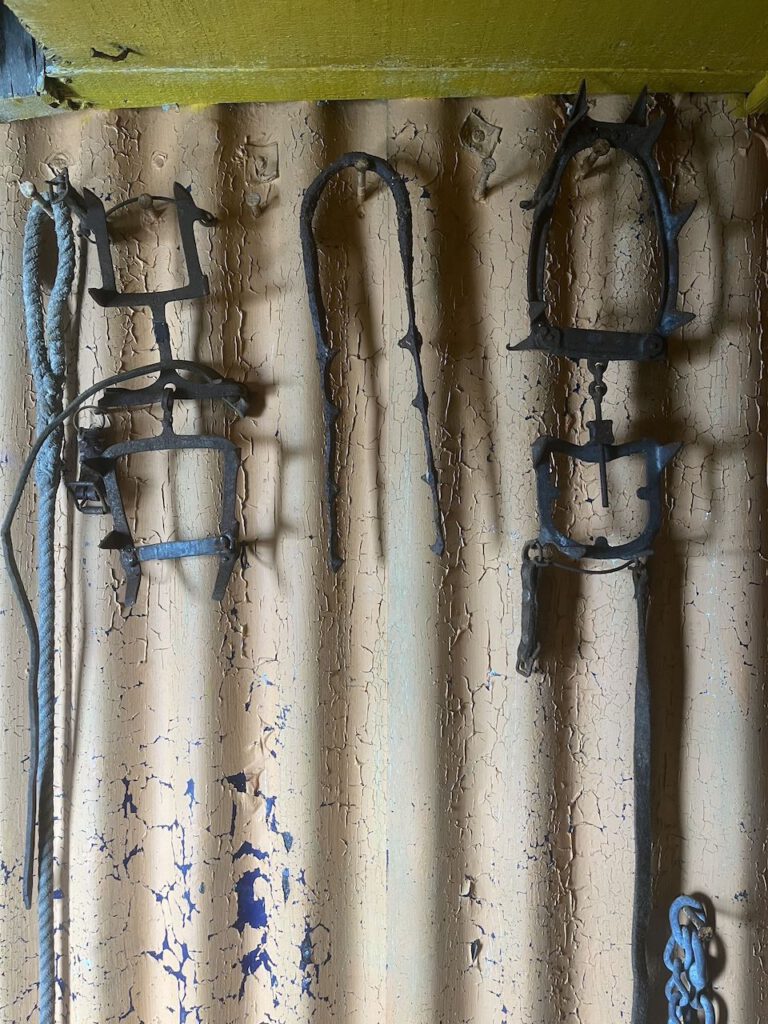
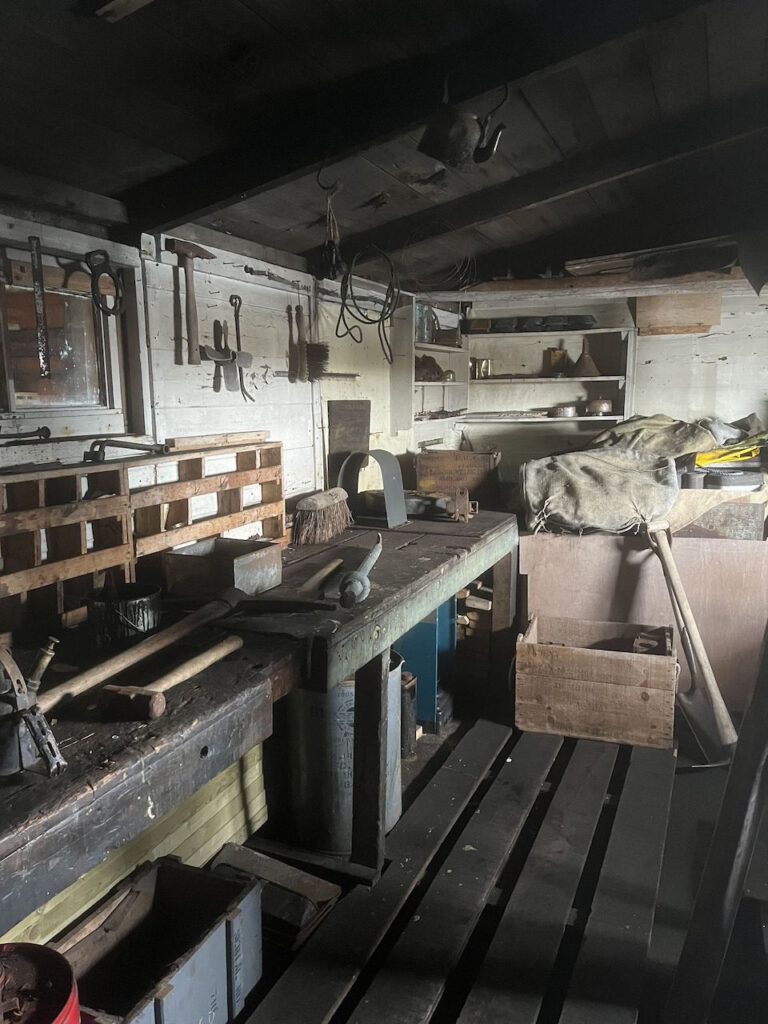
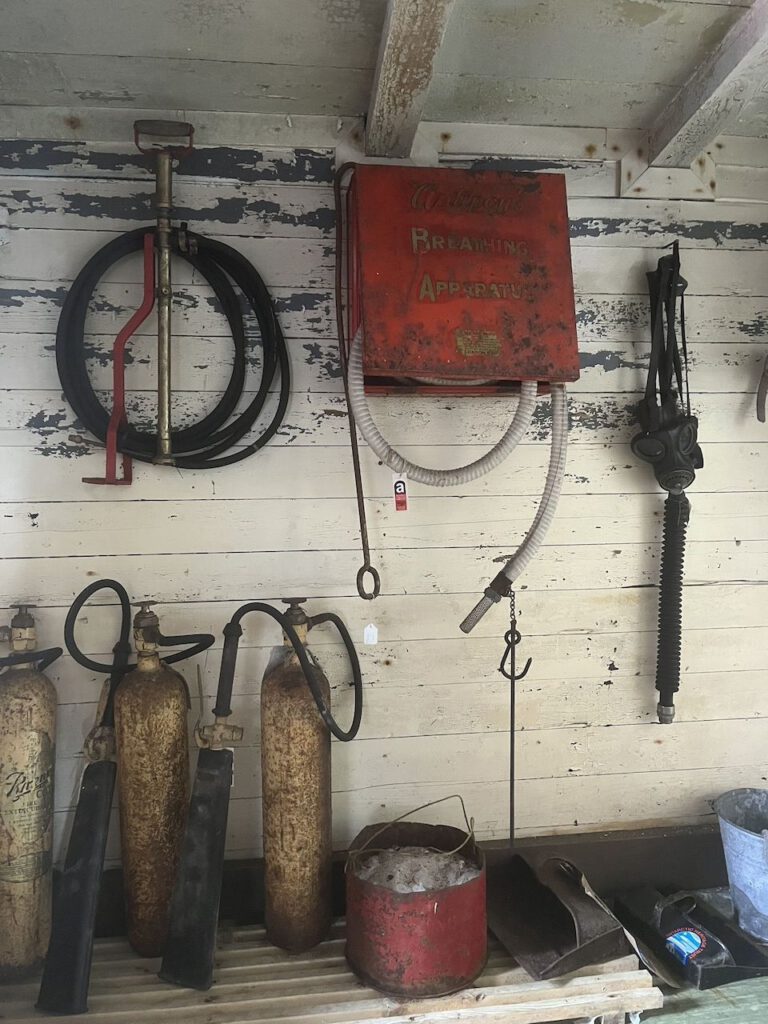
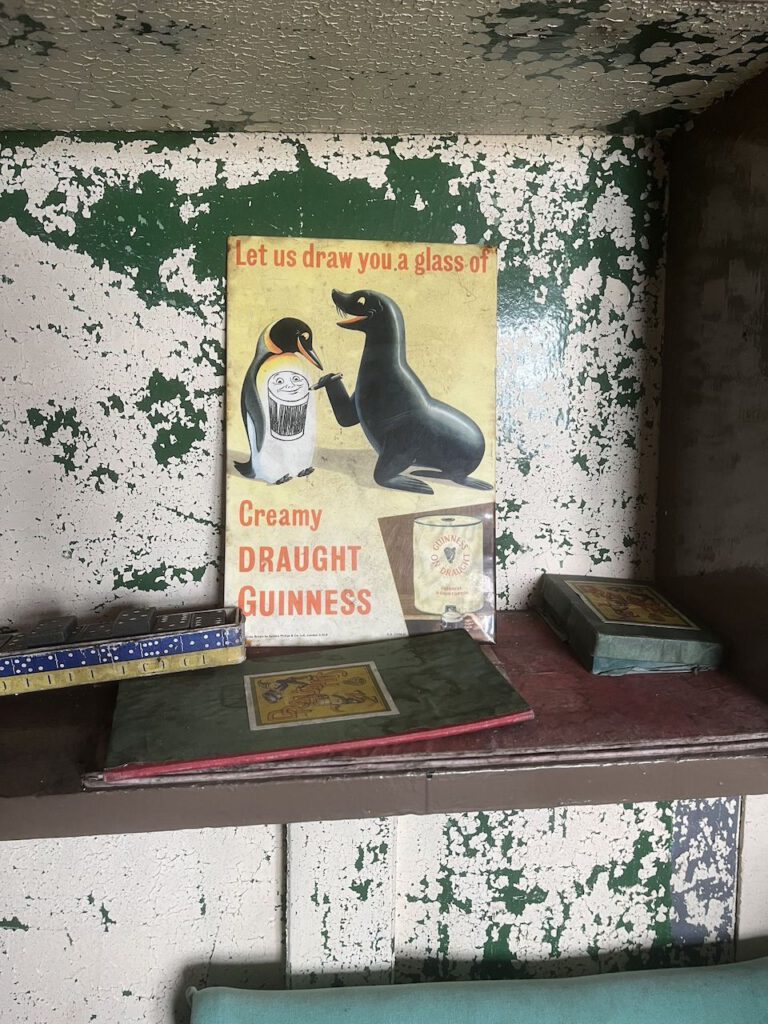
A short ascent to the neighboring glacier and summit of Winter Island offers a beautiful panoramic view of the station and the Argentine Islands. We then continue kayaking between and around the islands, past glacier-blue icebergs, leaping penguins, passing cormorants (Arctic Shag) and crabeater and Weddell seals lying lazily on floating floes. We also encounter the leopard seal again, but this time it shows no particular interest in us. After four hours, we pass the station again and return to the Selma.

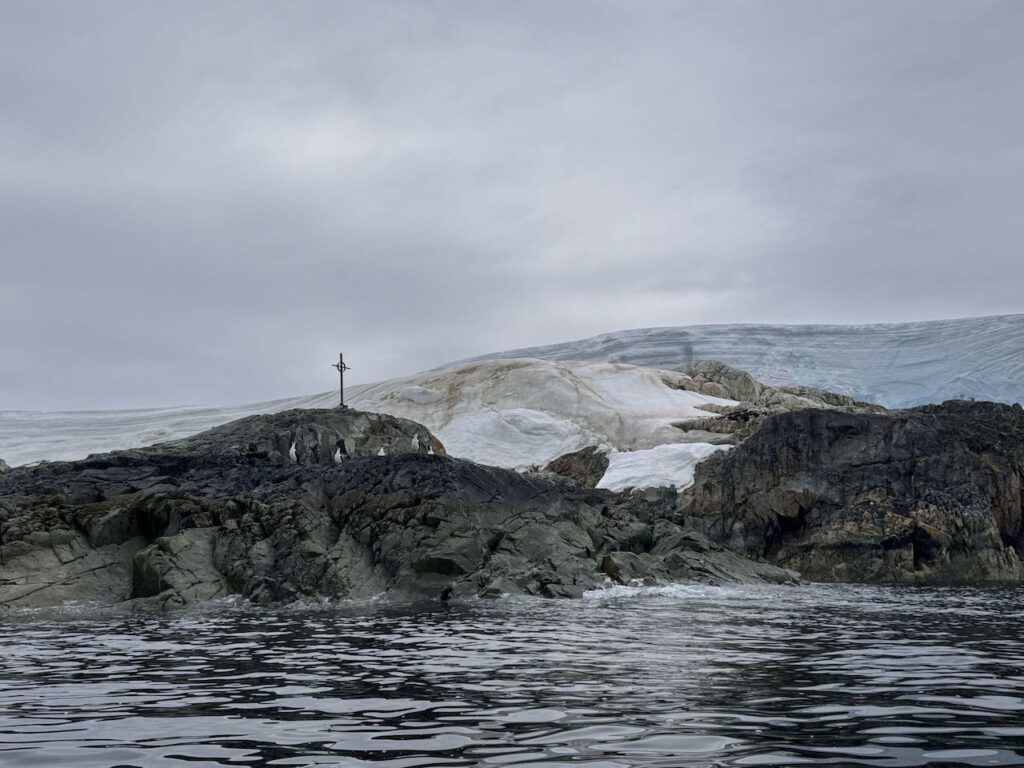
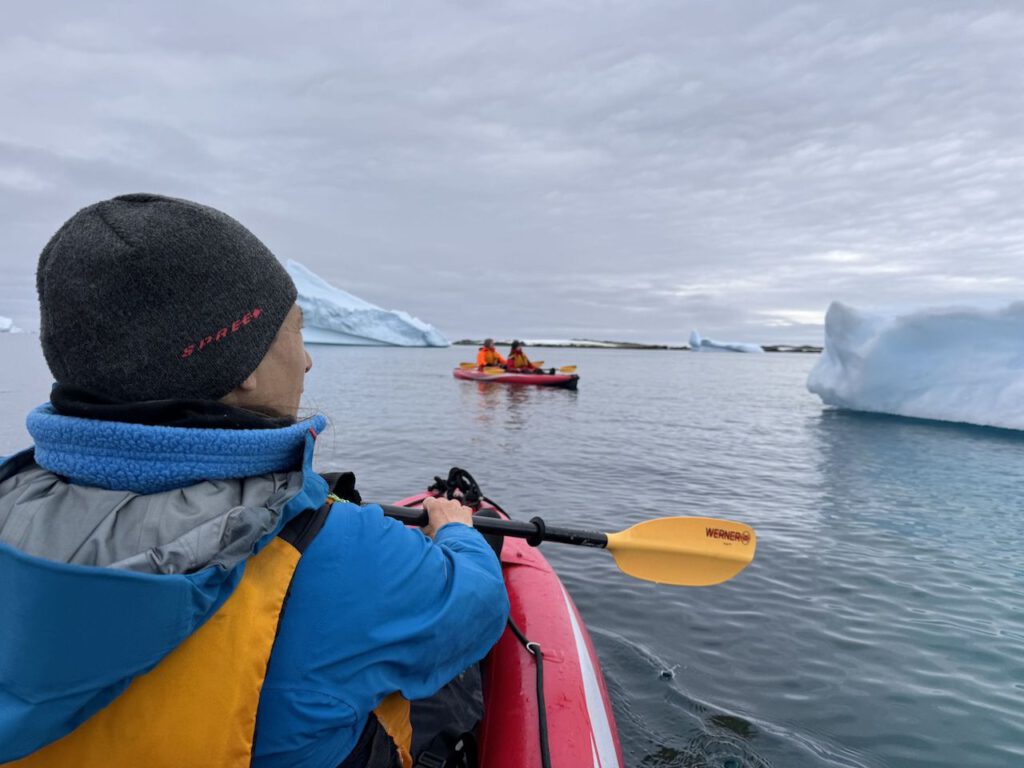

Crew extension
In the afternoon, the mountaineering team sets off once again for the neighboring glacier. Safety training is on the agenda. Alan, who regularly works for Mountain Rescue in Scotland, patiently practises various crevasse rescue techniques with us. After almost three hours, we are frozen through and finish our training session.
The Selma is now moored near the station’s small wooden pier and has stocked up on fresh water. We move together, rearrange our supplies and make room in the aft cabin to take Ivan on board. The biologist will accompany us for a few days; our journey south is a great opportunity for him to search for samples in remote places that are otherwise out of his reach. Meanwhile, our underwater drone remains at the station to support the scientists there.


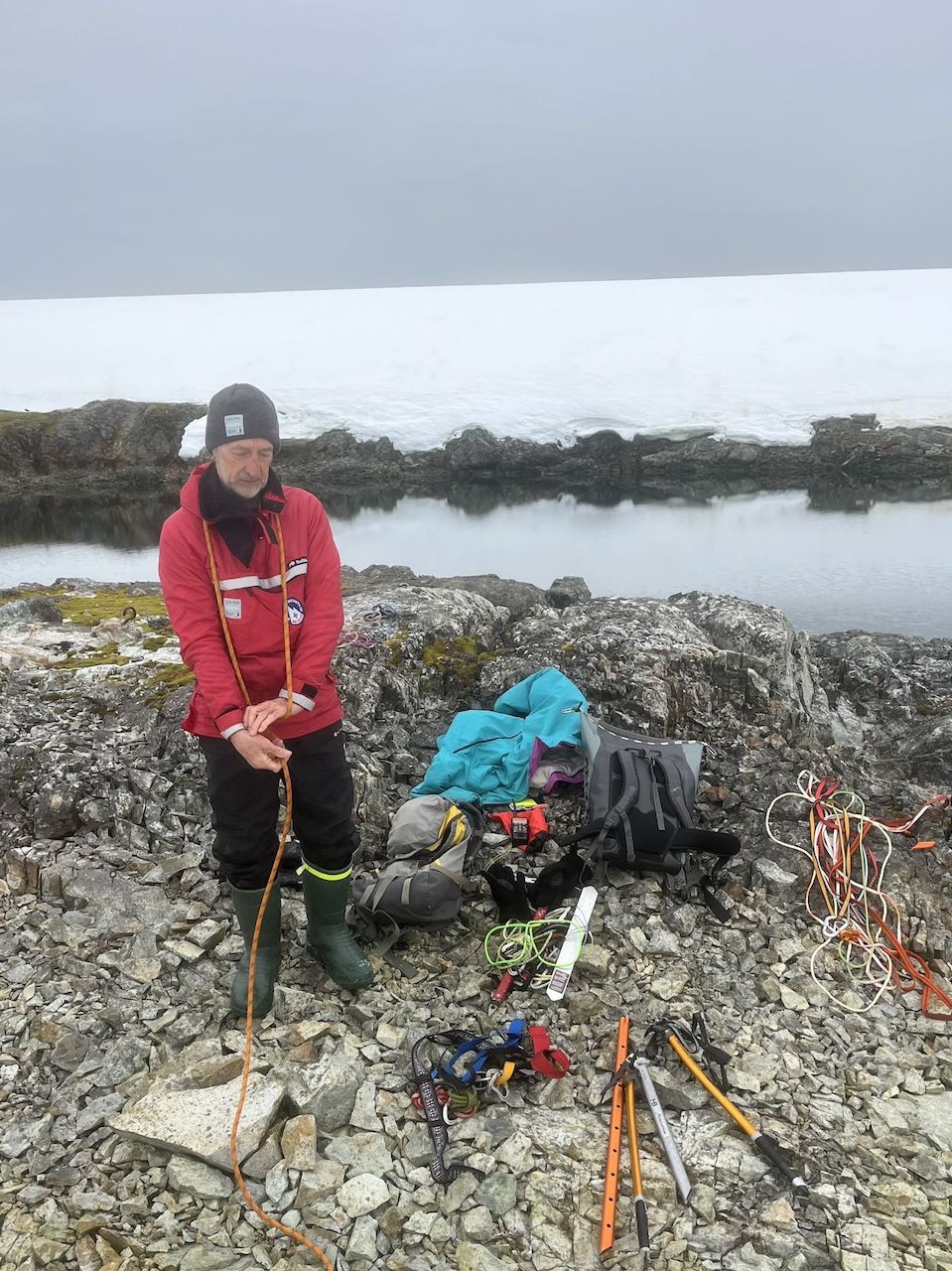
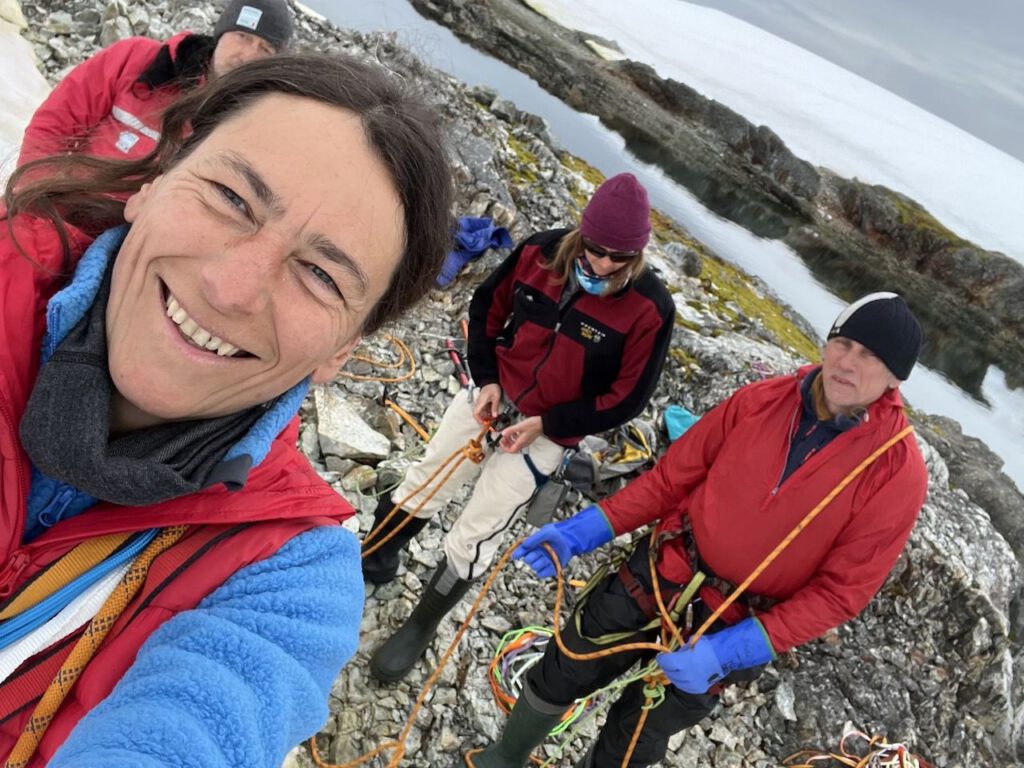

Tomorrow we continue south. Now with 12 men on board, newly assigned guards, a thirst for exploration and lots of curiosity. And the great certainty that we will be back here again soon in this wonderful place – at least to drop Ivan off. But perhaps also to enjoy the warm Ukrainian hospitality and the most beautiful sauna in the world one more time.
